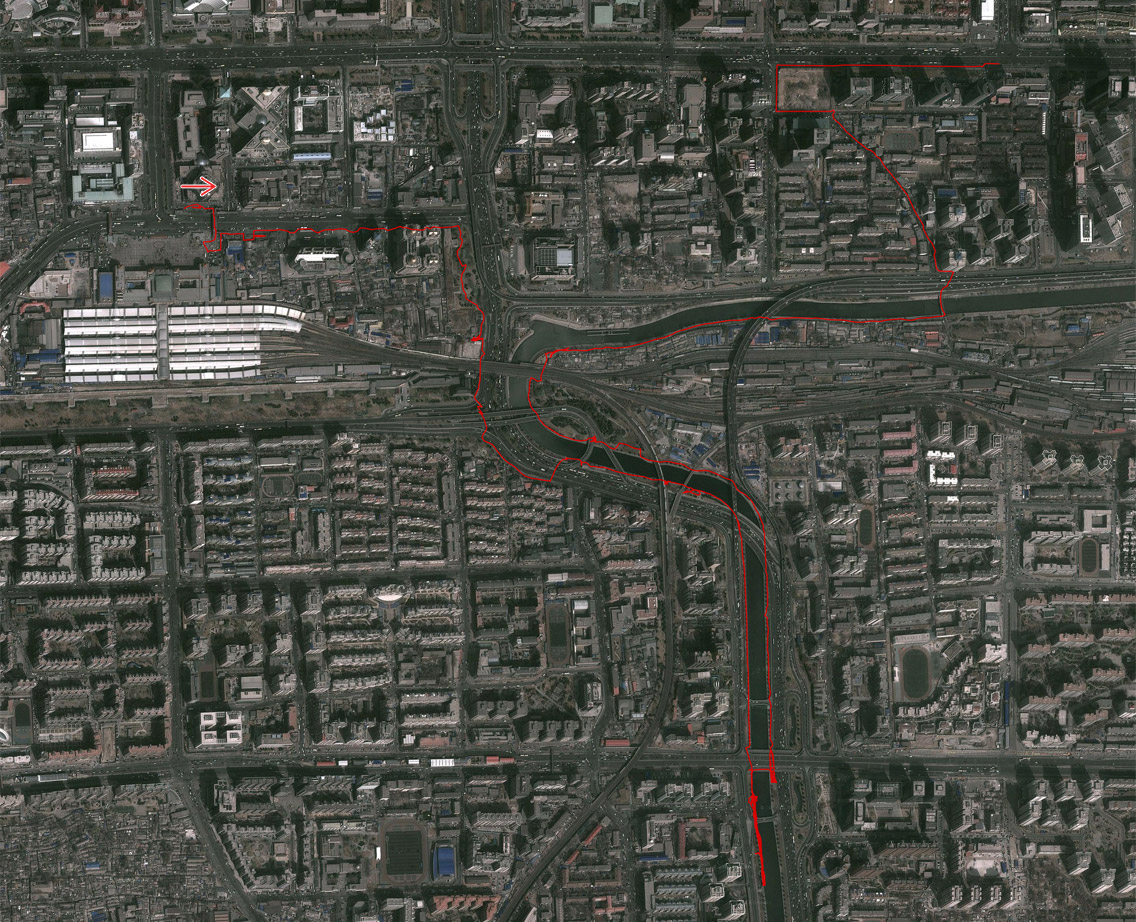Beijing Chongwenqu – 北京崇文区
January 16th 2014
From 12h33 to 18h05 (5h32min)
10,6 km.
跟随南护城河 (Following the south moat)
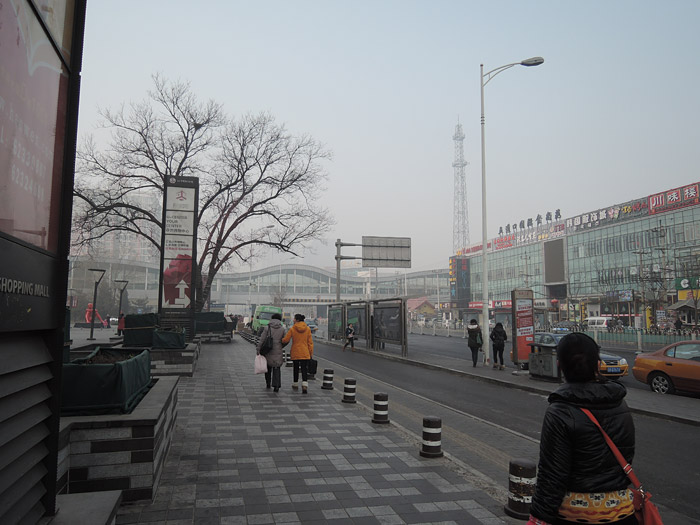 Departure at 11h35. A day with an especially high level of pollution.
Departure at 11h35. A day with an especially high level of pollution.
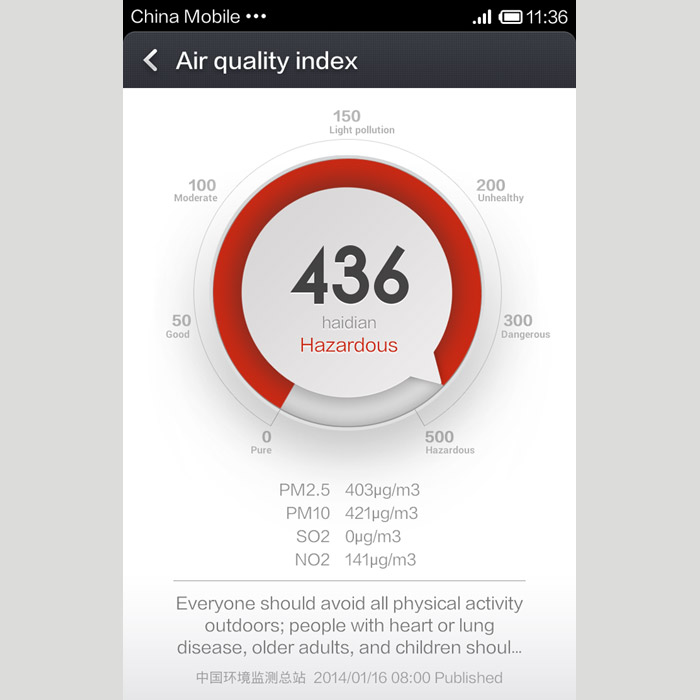 PM2,5 index at 403, when the World Heath Organization says that an index over 25 is dangerous. A perfect day for a walk!
PM2,5 index at 403, when the World Heath Organization says that an index over 25 is dangerous. A perfect day for a walk!
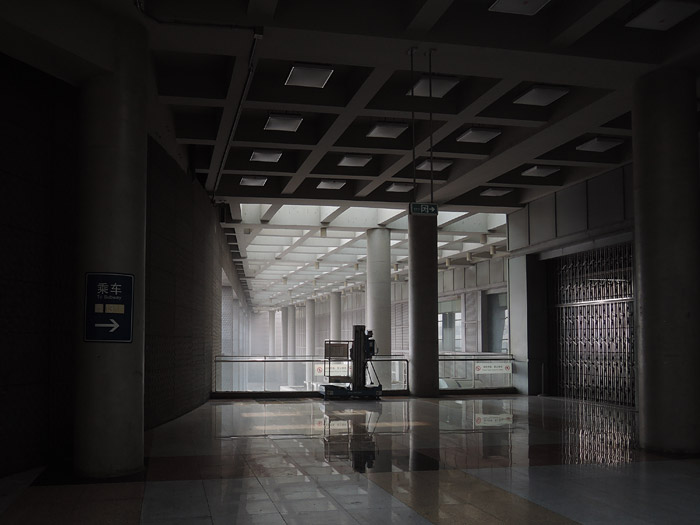 Even inside the subway you could notice the haze.
Even inside the subway you could notice the haze.
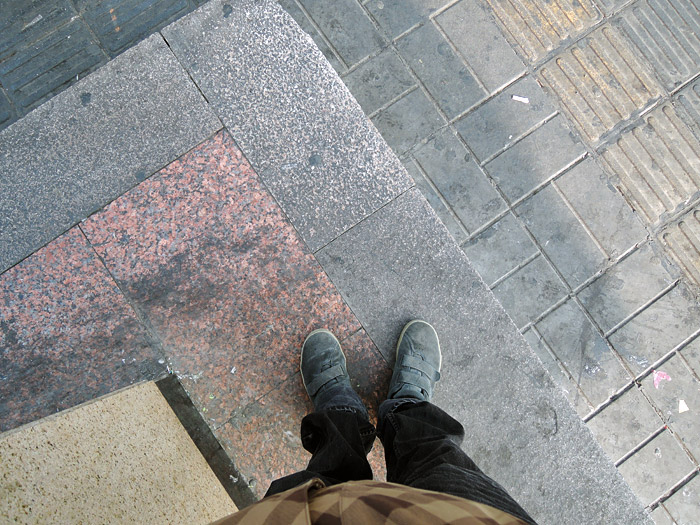 I took the subway to Beijingzhan (北京站) the capital’s main train station, situated south-east from downtown. I started to walk from there because my idea was to explore the area around the great south moat which, like the two other moats at the north, was part of the old city’s fortifications.
I took the subway to Beijingzhan (北京站) the capital’s main train station, situated south-east from downtown. I started to walk from there because my idea was to explore the area around the great south moat which, like the two other moats at the north, was part of the old city’s fortifications.
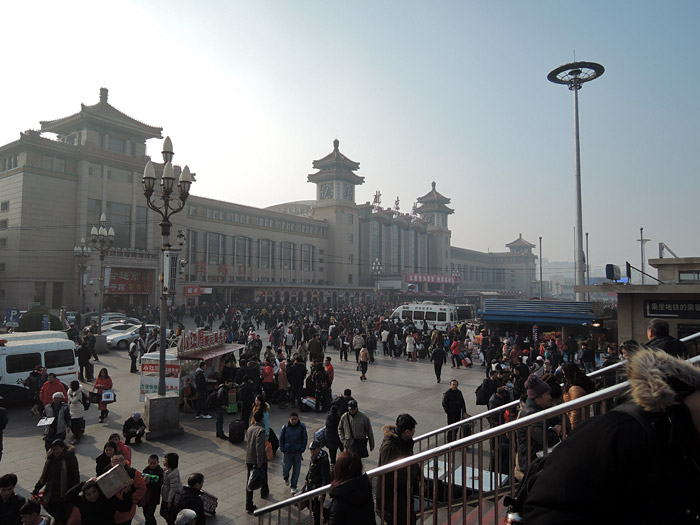 I arrived at the station, it was a few days before Chunjie (春节), the Chinese New Year and also the period of time with the largest annual human migration in the world – more than 3,5 billion trips predicted during 40 days for 2014.
I arrived at the station, it was a few days before Chunjie (春节), the Chinese New Year and also the period of time with the largest annual human migration in the world – more than 3,5 billion trips predicted during 40 days for 2014.
 And it had not started yet.
And it had not started yet.
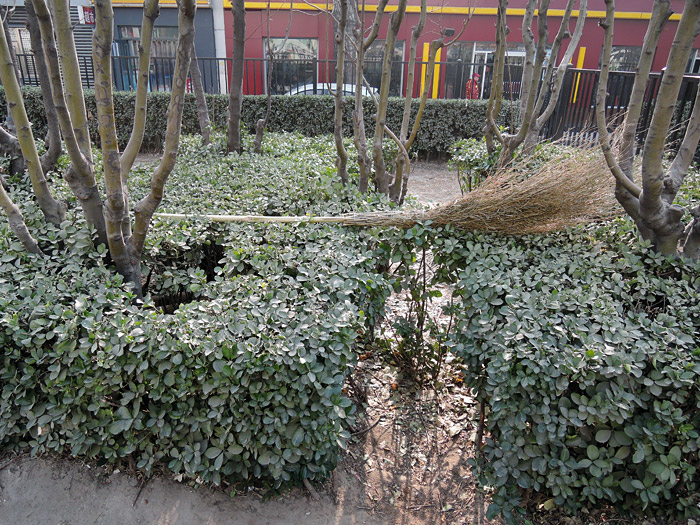
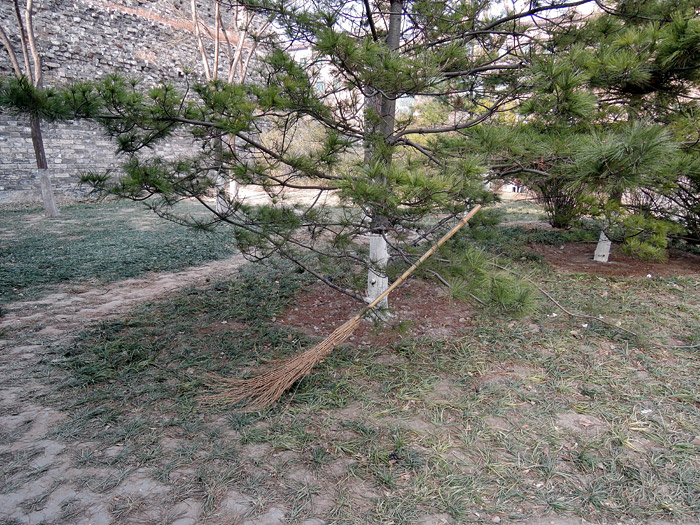 A couple of brooms ready to be used.
A couple of brooms ready to be used.
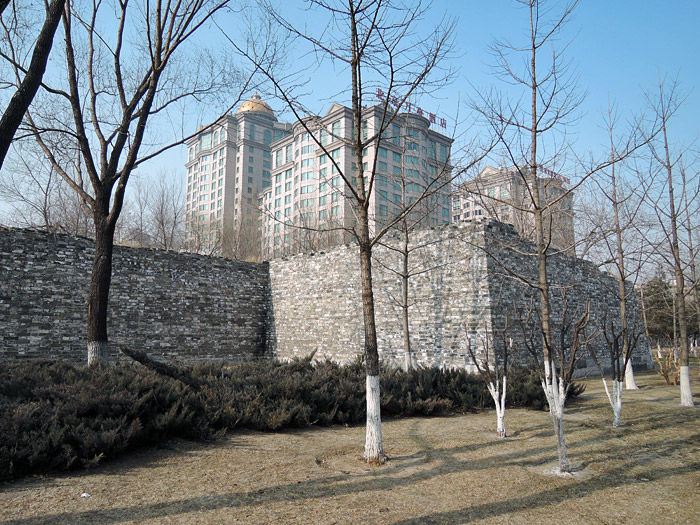 A few hundreds meters east from the station, in a park, you can still see remains of the old city wall.
A few hundreds meters east from the station, in a park, you can still see remains of the old city wall.
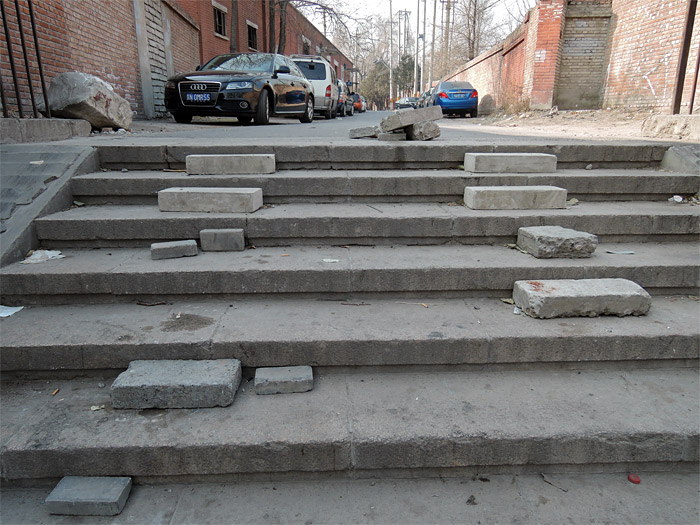 While I was looking for a way to access the moat, I came across this stairway full of cement blocks.
While I was looking for a way to access the moat, I came across this stairway full of cement blocks.
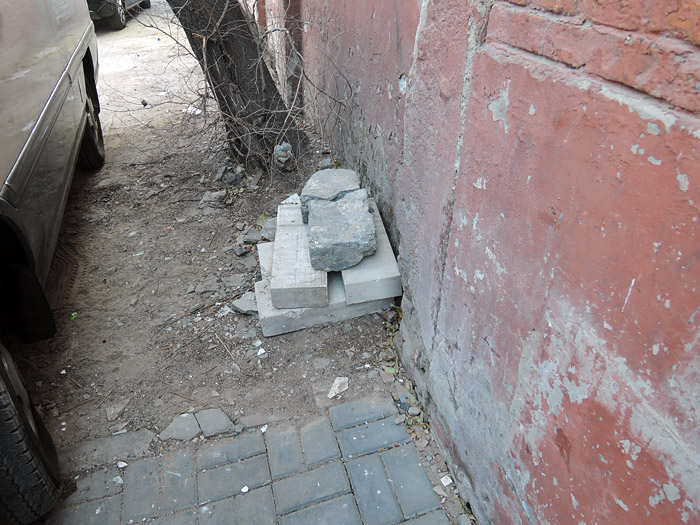 I found more blocks against a nearby wall. I decided to collect them all.
I found more blocks against a nearby wall. I decided to collect them all.
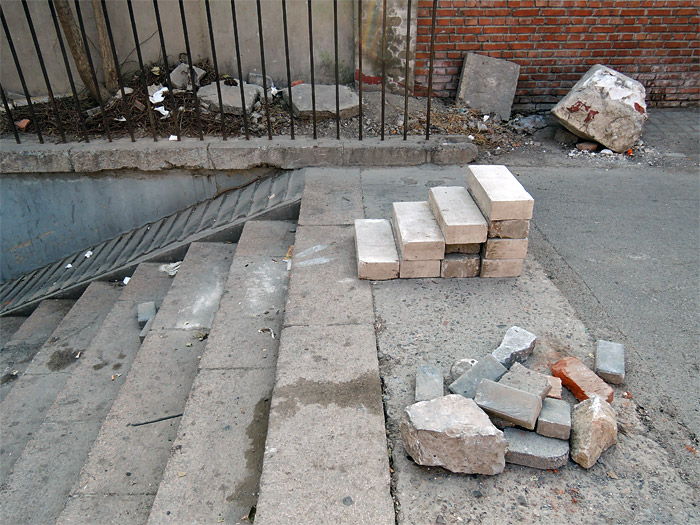 I arranged them altogether to build a stairway on top of the stairway.
I arranged them altogether to build a stairway on top of the stairway.
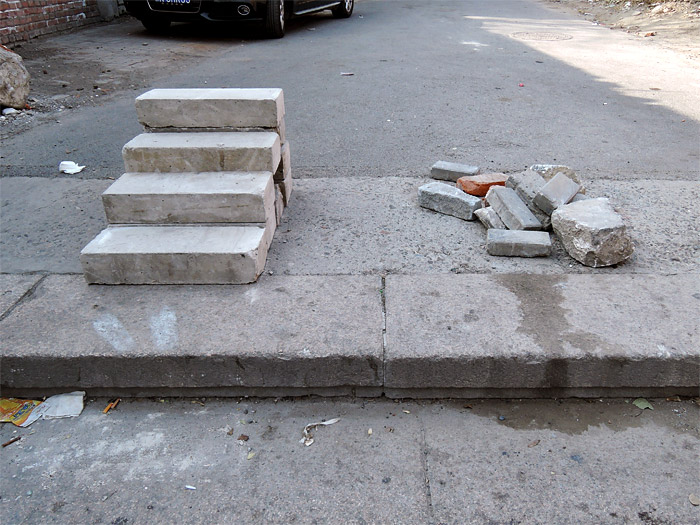
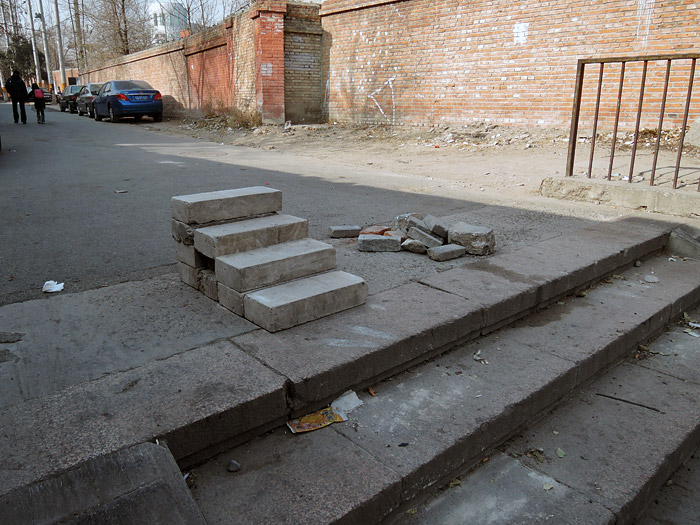
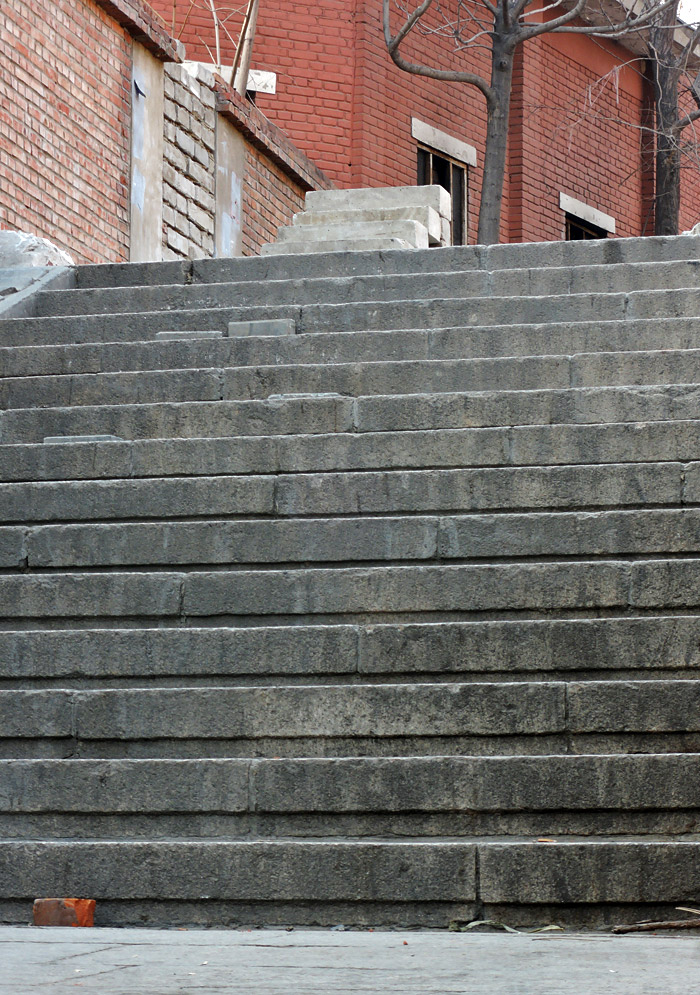 Usually, when I notice bricks, wood blocks or cinderblock in a stairway they are used to facilitate the access of a vehicle. Here, the stairway was so high that this was obviously not the case. I don’t know why there were so many blocks in the middle of the steps but it seemed as though they were asking to be organized so I took advantage and made the stairway even higher.
Usually, when I notice bricks, wood blocks or cinderblock in a stairway they are used to facilitate the access of a vehicle. Here, the stairway was so high that this was obviously not the case. I don’t know why there were so many blocks in the middle of the steps but it seemed as though they were asking to be organized so I took advantage and made the stairway even higher.
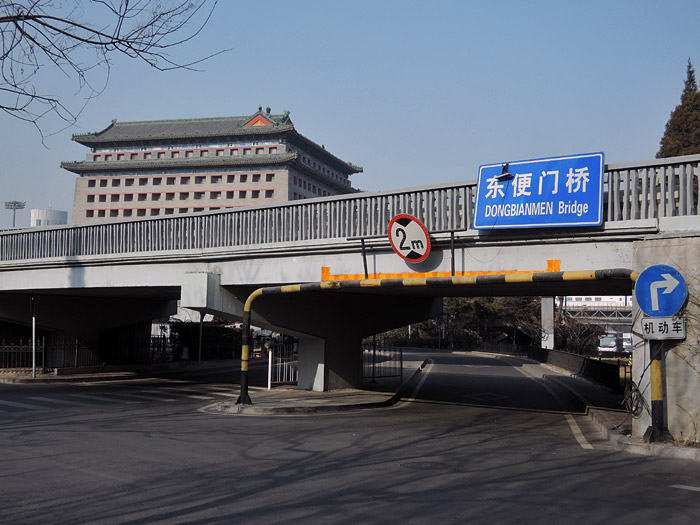 Dongbianmen, the old city wall south-east corner door.
Dongbianmen, the old city wall south-east corner door.
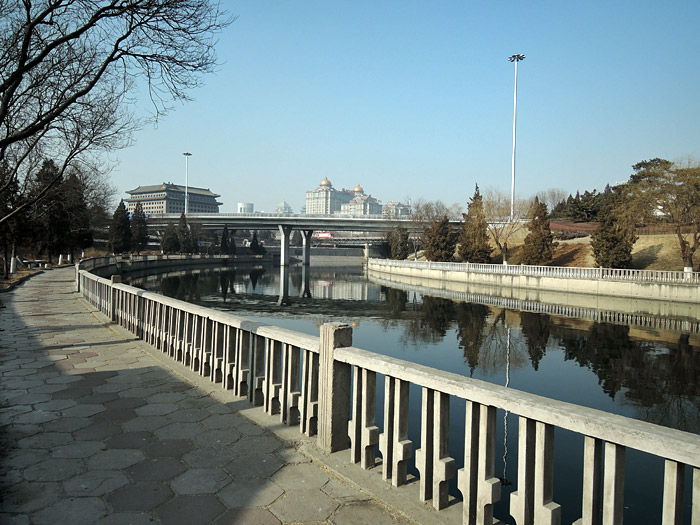 When the Tonghui river (通惠河) – which comes from the east – arrives at Dongbianmen, it makes a turn to the south and at this point becomes the south moat (南护城河).
When the Tonghui river (通惠河) – which comes from the east – arrives at Dongbianmen, it makes a turn to the south and at this point becomes the south moat (南护城河).
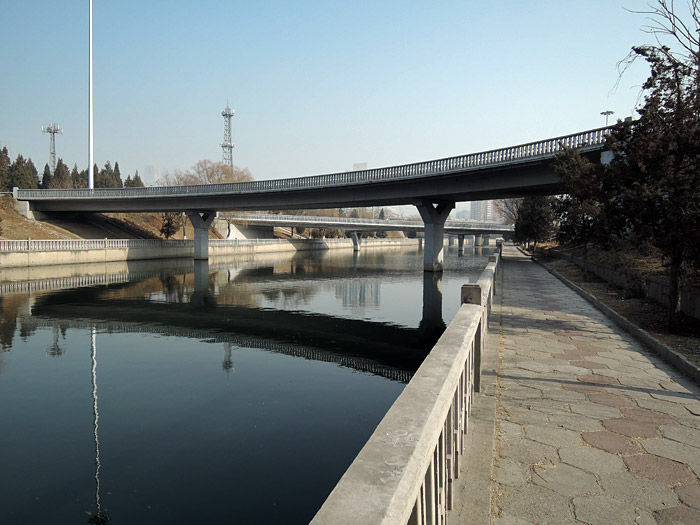 At this point, different train lines and highway overpasses tangle together across the moat.
At this point, different train lines and highway overpasses tangle together across the moat.
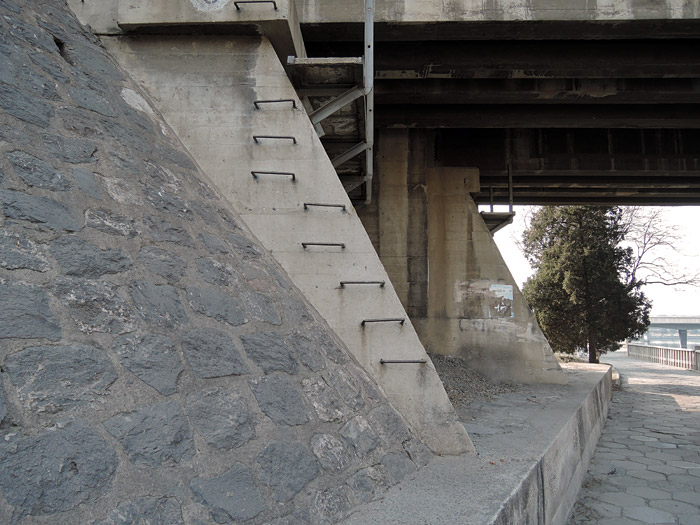 Under one of these bridges, I noticed a singular metal ladder moving up first along a diagonal line and then, after three steps, along a vertical one in two distinct sections.
Under one of these bridges, I noticed a singular metal ladder moving up first along a diagonal line and then, after three steps, along a vertical one in two distinct sections.
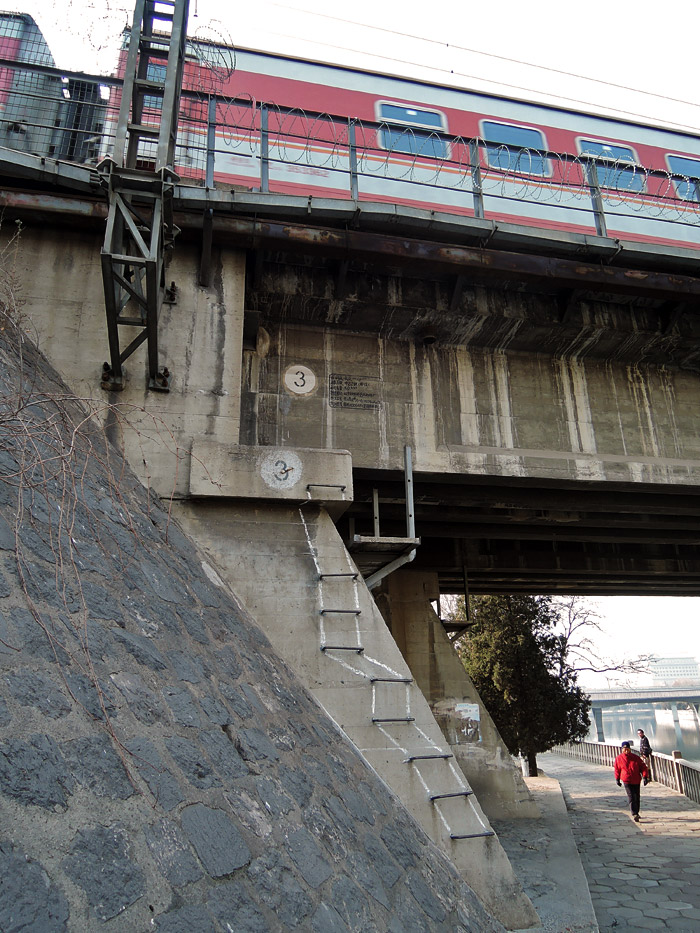 I looked for a limestone (I am experienced now and find them easily) and I started to join the steps.
I looked for a limestone (I am experienced now and find them easily) and I started to join the steps.
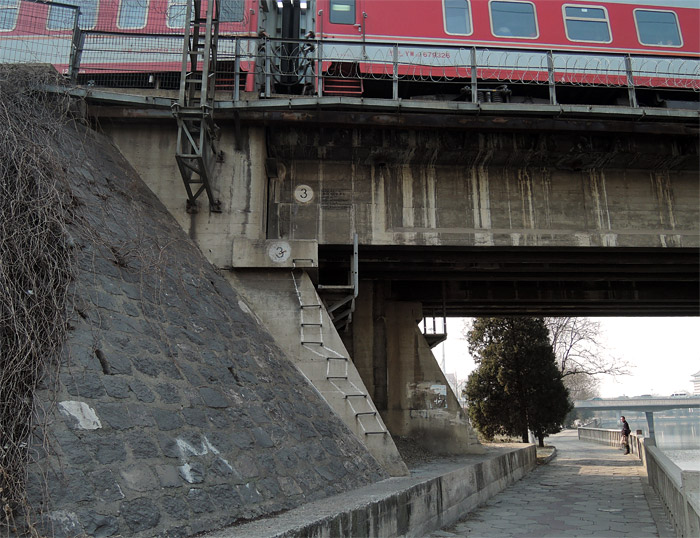 What I was not expecting was that from far away the lines would create a 3D effect.
What I was not expecting was that from far away the lines would create a 3D effect.
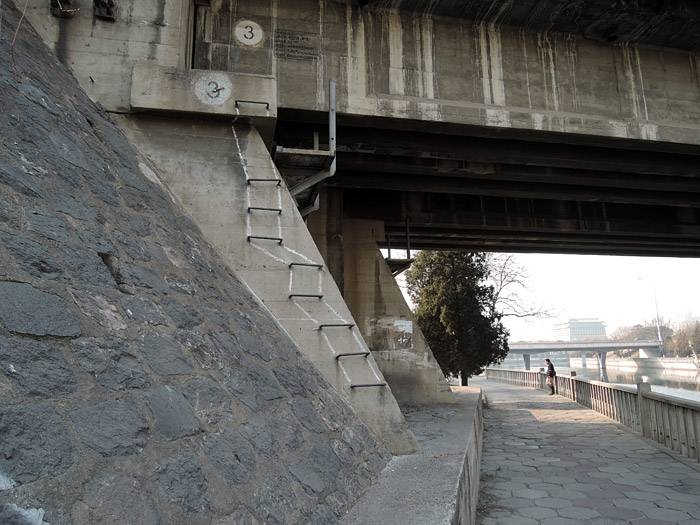
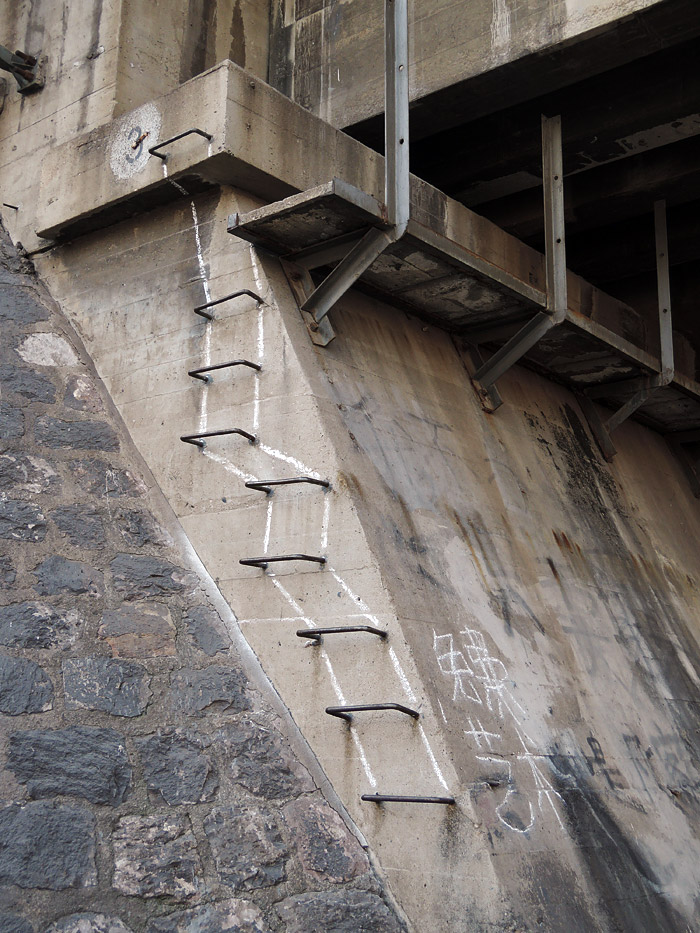
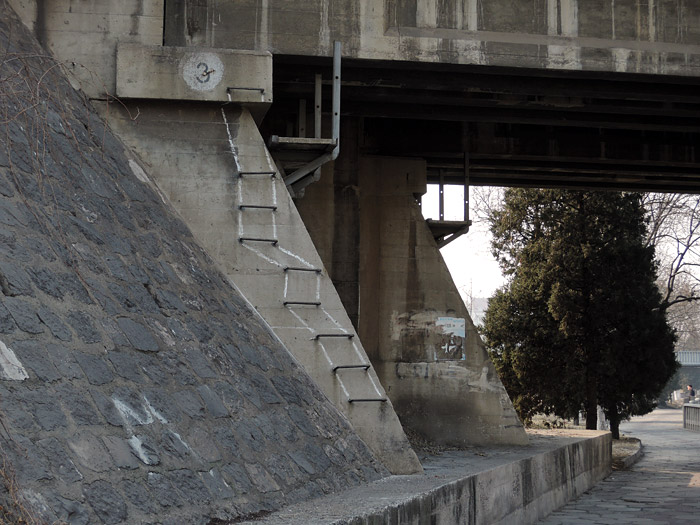
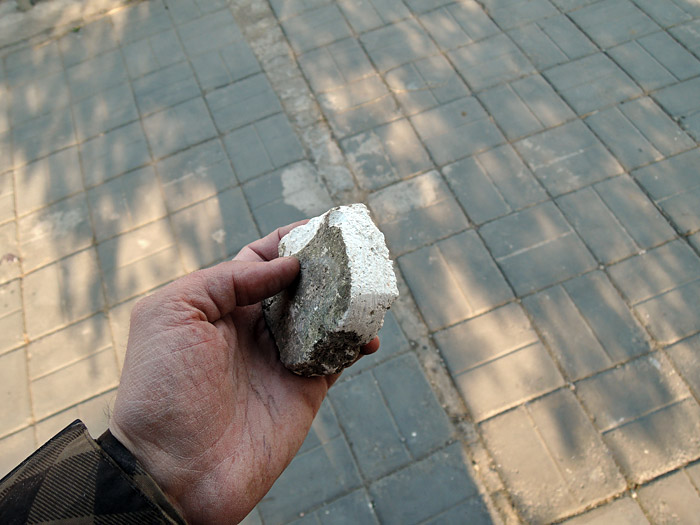
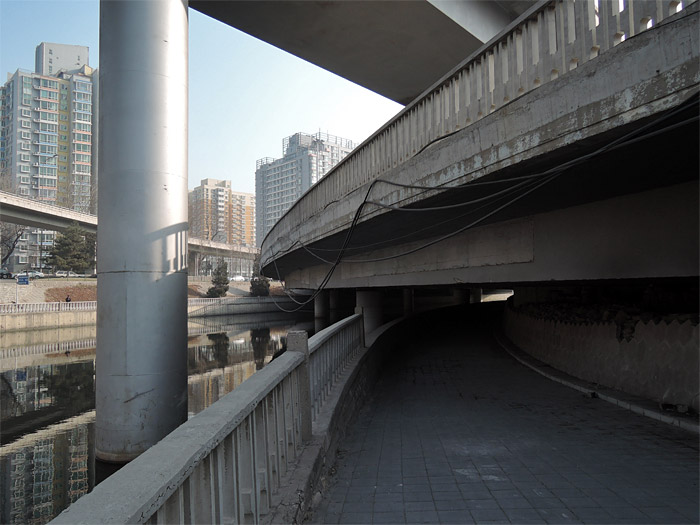 I kept on walking along the moat and I entered the core of the traffic knot.
I kept on walking along the moat and I entered the core of the traffic knot.
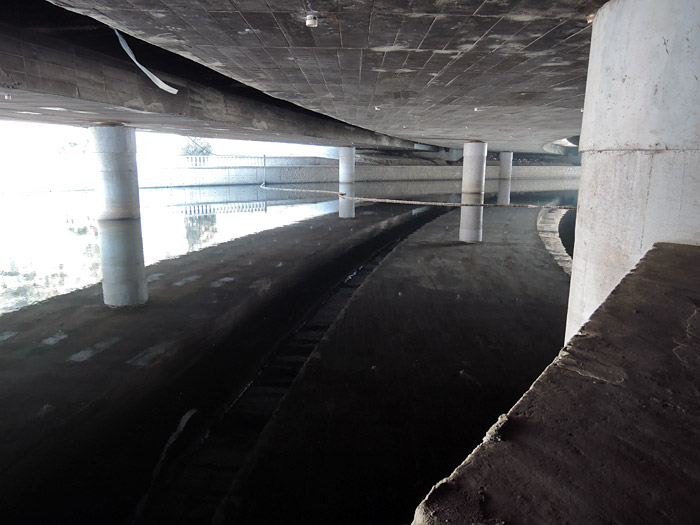 Under a highway overpass, the moat turns toward the south.
Under a highway overpass, the moat turns toward the south.
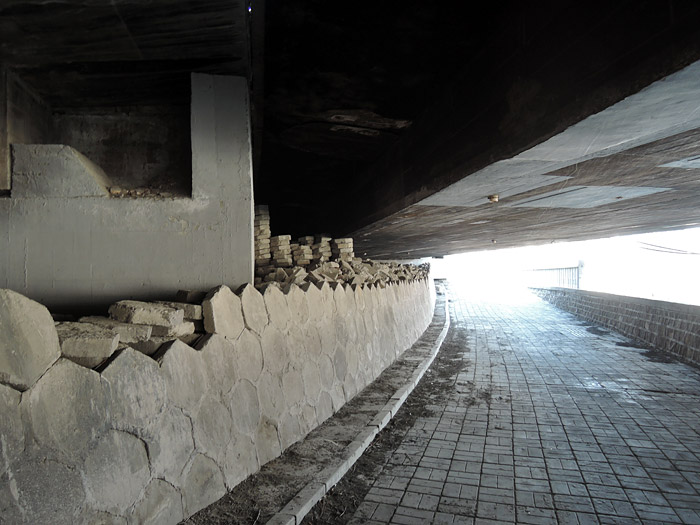 On one side of the path, a wall was erected to separate the walkway from the residual space created under the bridge. A big part of this space was occupied by shelters that people had built using the hexagonal blocks from the wall.
On one side of the path, a wall was erected to separate the walkway from the residual space created under the bridge. A big part of this space was occupied by shelters that people had built using the hexagonal blocks from the wall.
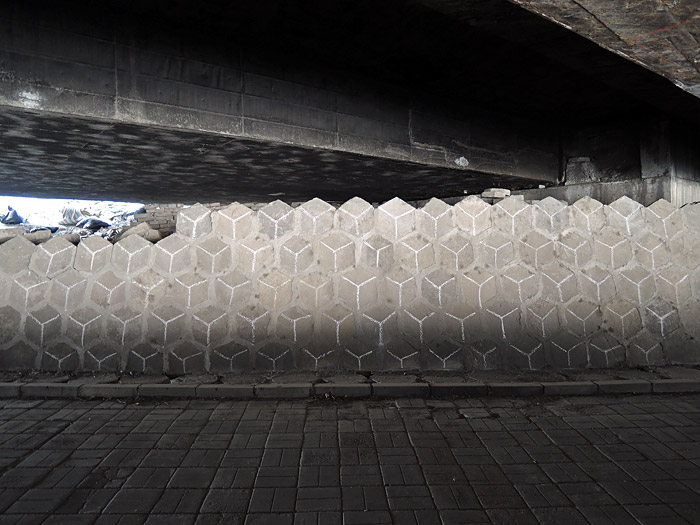 Since the first experiment, drawing with limestone produced a 3D effect, I decided to continue the trend and transformed the hexagons of the wall into cubes.
Since the first experiment, drawing with limestone produced a 3D effect, I decided to continue the trend and transformed the hexagons of the wall into cubes.
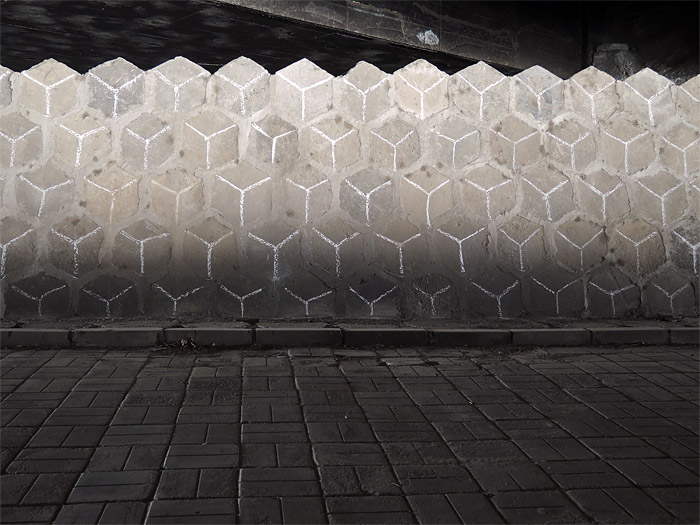
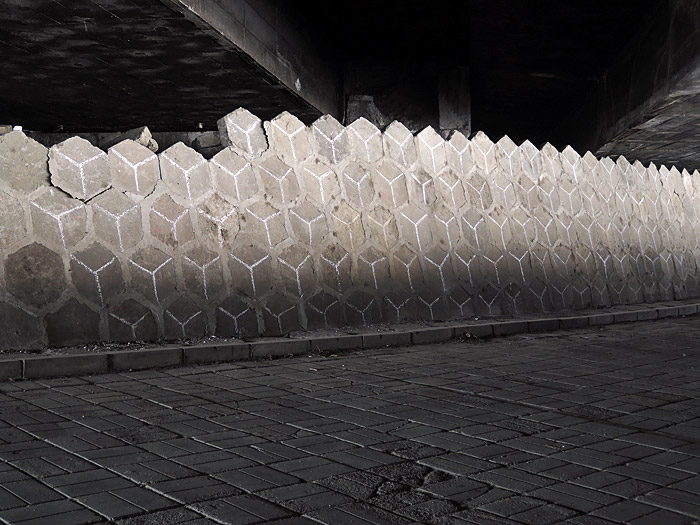
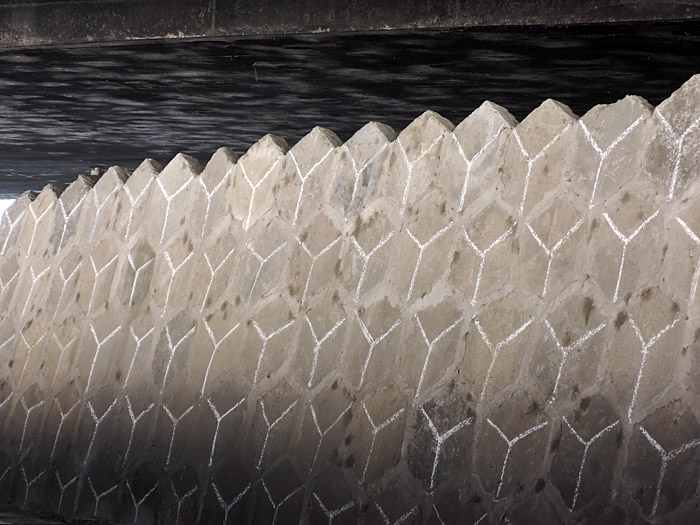
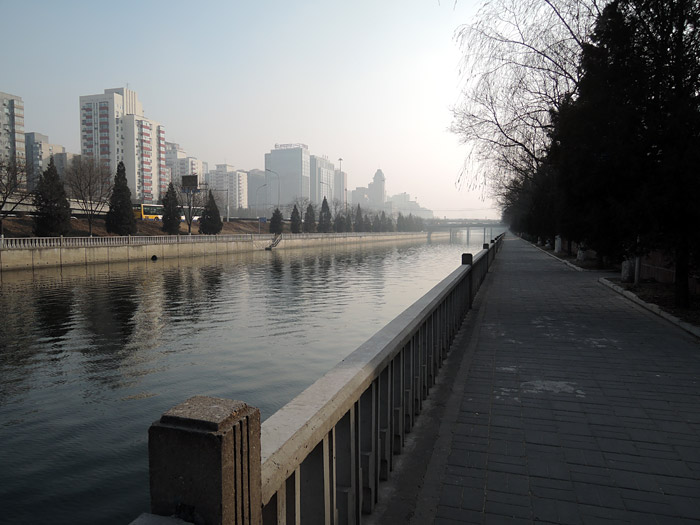 Half an hour later, I finished and went back walking south.
Half an hour later, I finished and went back walking south.
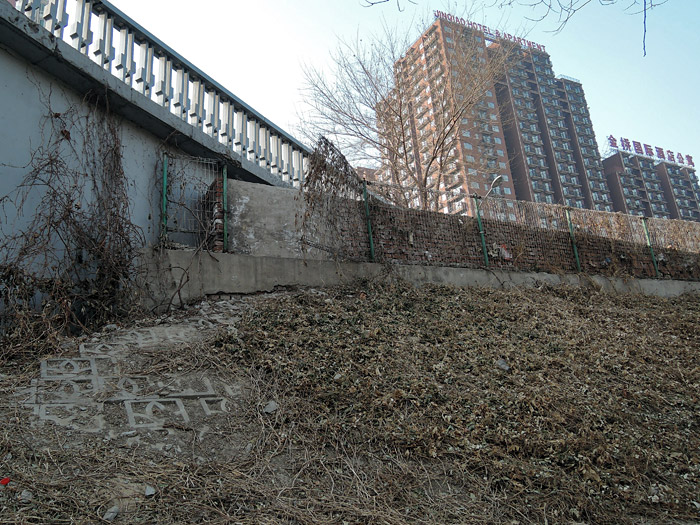 An alternative exit.
An alternative exit.
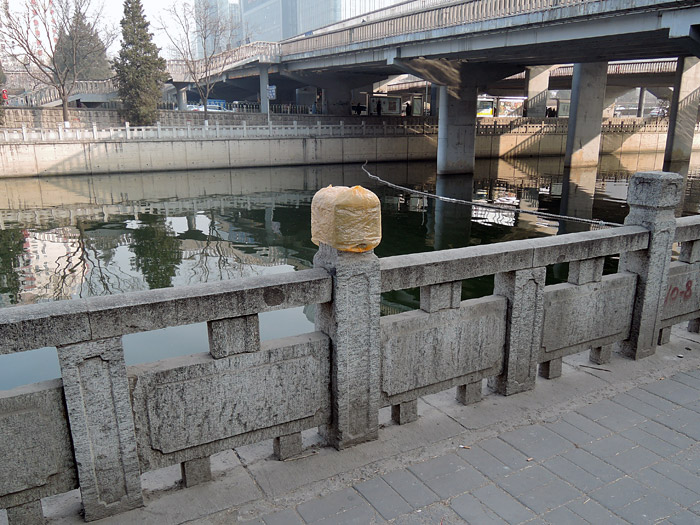 I took a picture of this very inspiring detail.
I took a picture of this very inspiring detail.
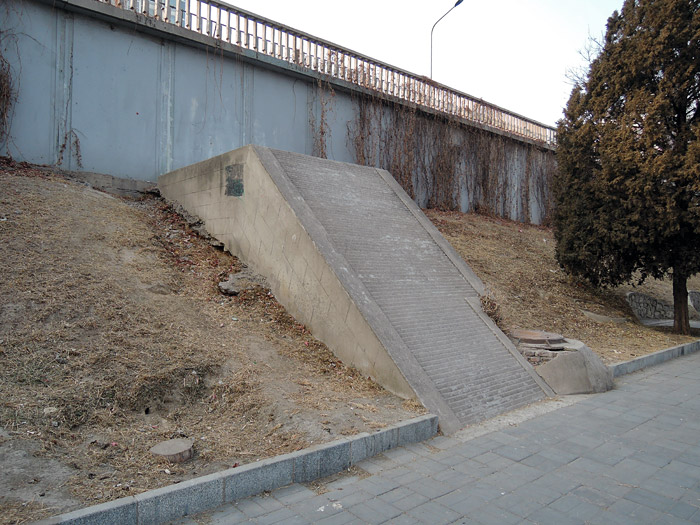 And I found this monument.
And I found this monument.
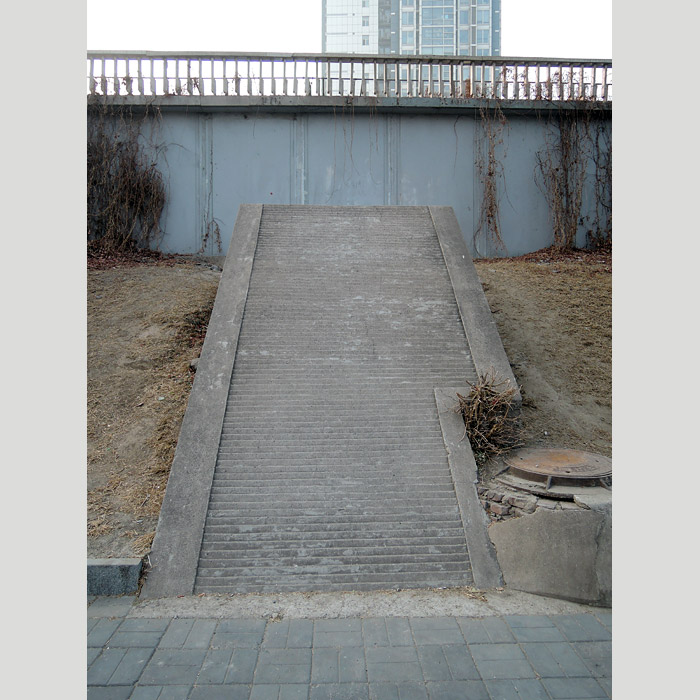 I looked at it from every angle but couldn’t understand. It looked like a stairway but the steps were too small. The remains of an old ramp to slide boats down to the water? Was the manhole added after? Could be, but I couldn’t see any newer junction in the concrete. I have no idea, I don’t understand why this monument was constructed but what I understand less is why it ended up like this, with the bottom-right part deviated. I don’t know which of the two elements was built first, the ramp or the manhole, but what I really don’t understand is why they couldn’t build them half a meter aside to avoid having to deviate the ramp.
I looked at it from every angle but couldn’t understand. It looked like a stairway but the steps were too small. The remains of an old ramp to slide boats down to the water? Was the manhole added after? Could be, but I couldn’t see any newer junction in the concrete. I have no idea, I don’t understand why this monument was constructed but what I understand less is why it ended up like this, with the bottom-right part deviated. I don’t know which of the two elements was built first, the ramp or the manhole, but what I really don’t understand is why they couldn’t build them half a meter aside to avoid having to deviate the ramp.
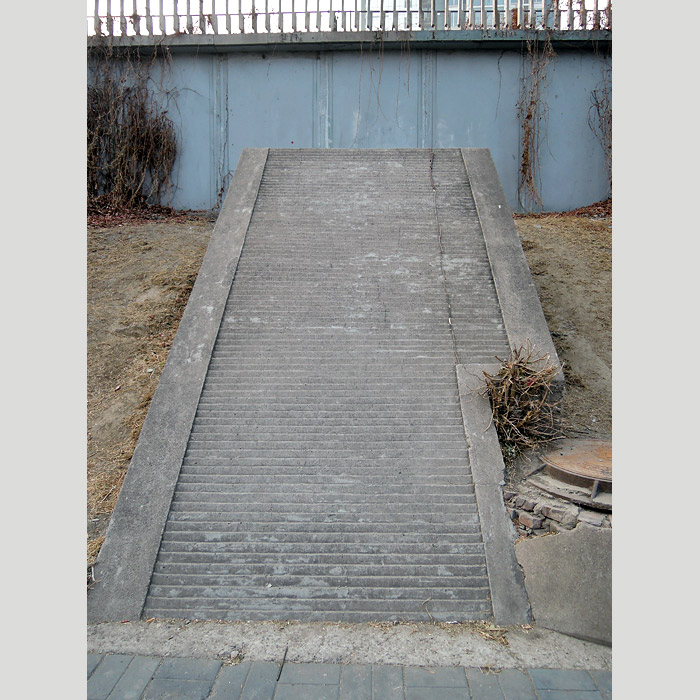 Immediately, I wanted to highlight this strange cut. I put some small wood sticks to mark the line following the cut.
Immediately, I wanted to highlight this strange cut. I put some small wood sticks to mark the line following the cut.
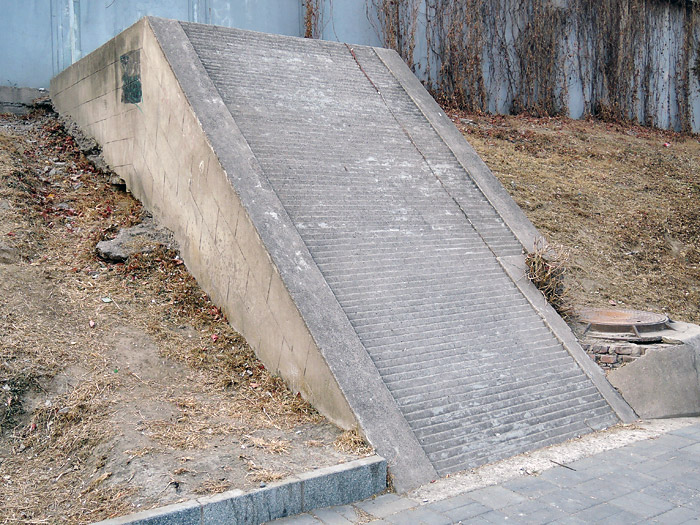 It was not visible enough and I couldn’t use any limestone because the central part was out of my reach.
It was not visible enough and I couldn’t use any limestone because the central part was out of my reach.
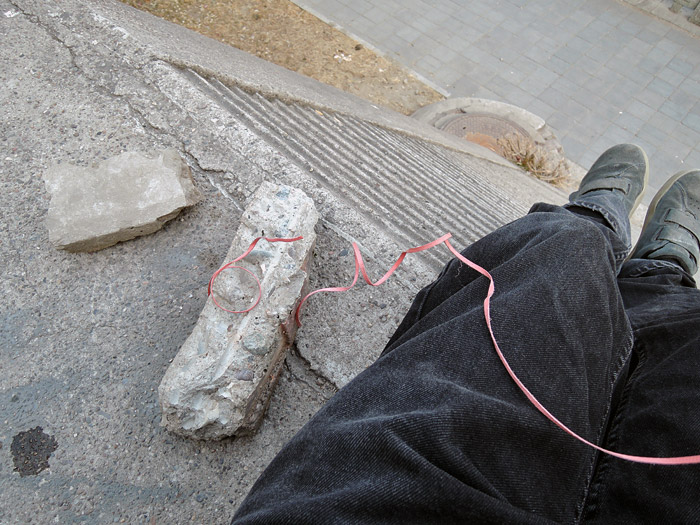 I found a red ribbon in the grass nearby.
I found a red ribbon in the grass nearby.
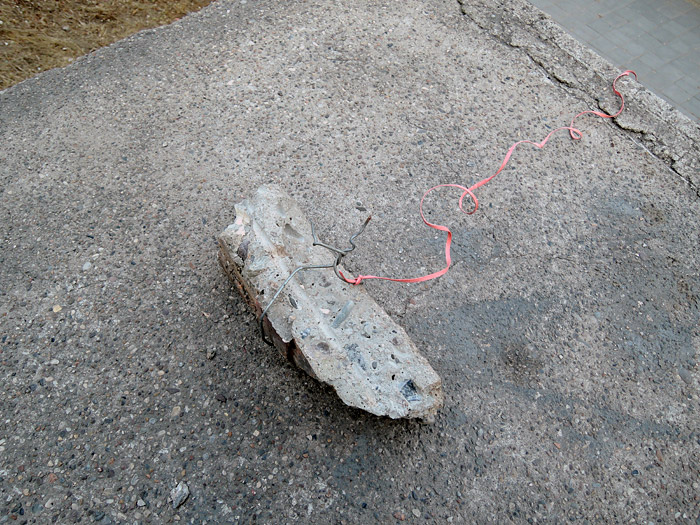
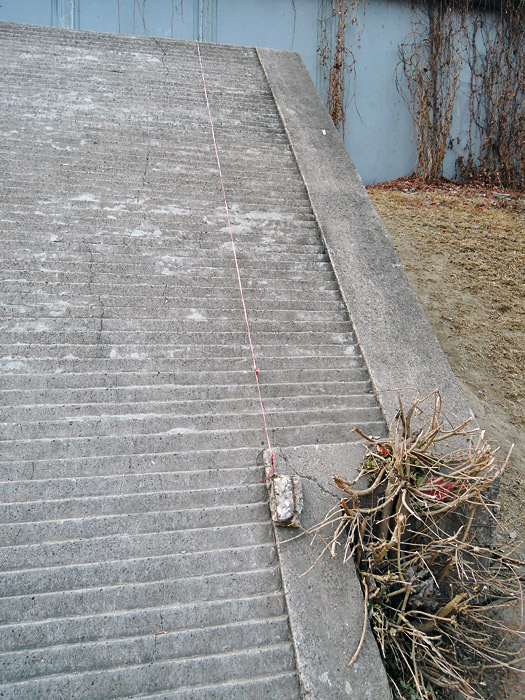
I marked the line with the ribbon and a rock.
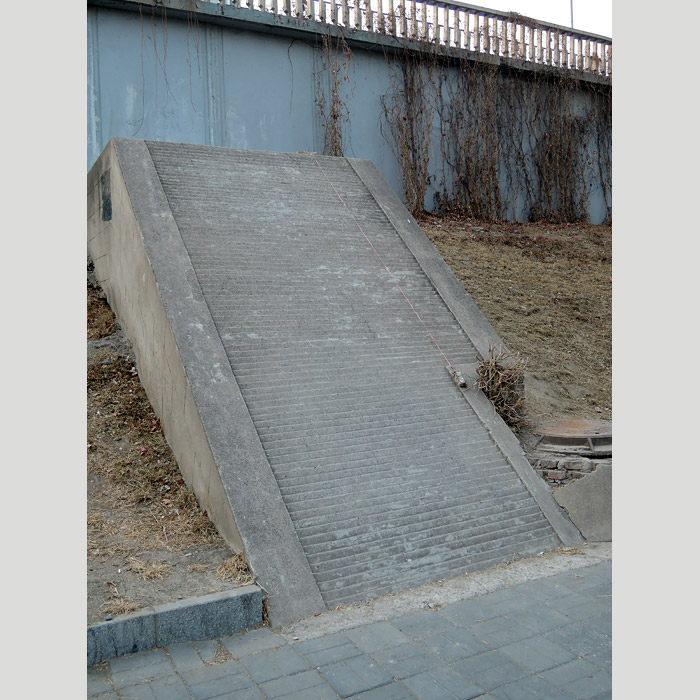 You cannot really see it in the picture but in reality the line was very visible.
You cannot really see it in the picture but in reality the line was very visible.
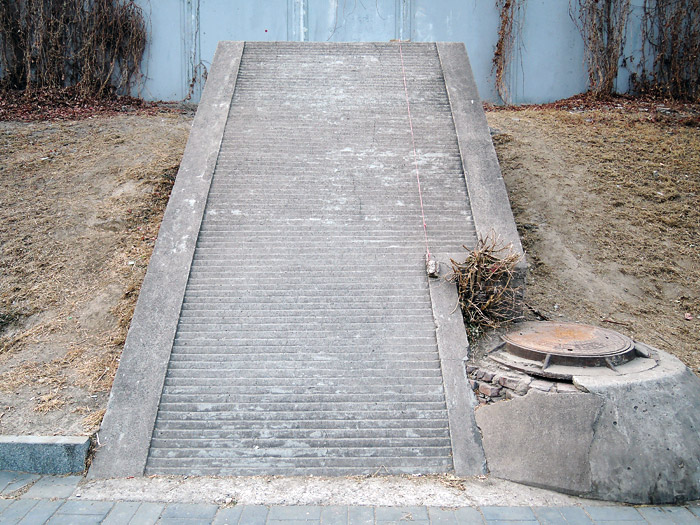 Still, I thought it would be better to mark the width of the line.
Still, I thought it would be better to mark the width of the line.
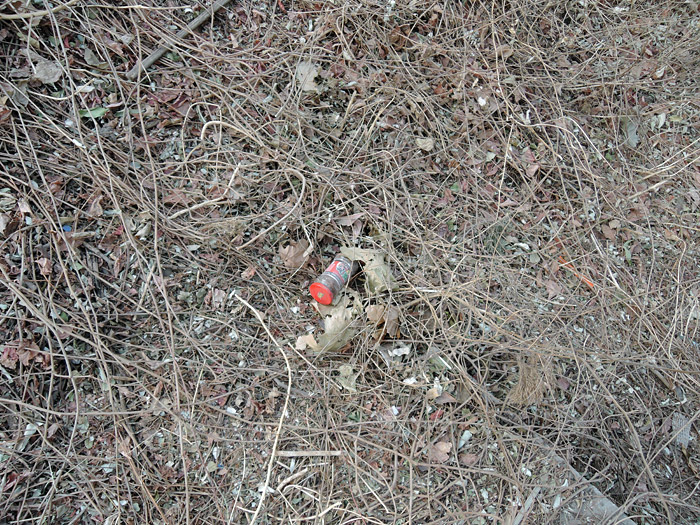 I collected some containers.
I collected some containers.
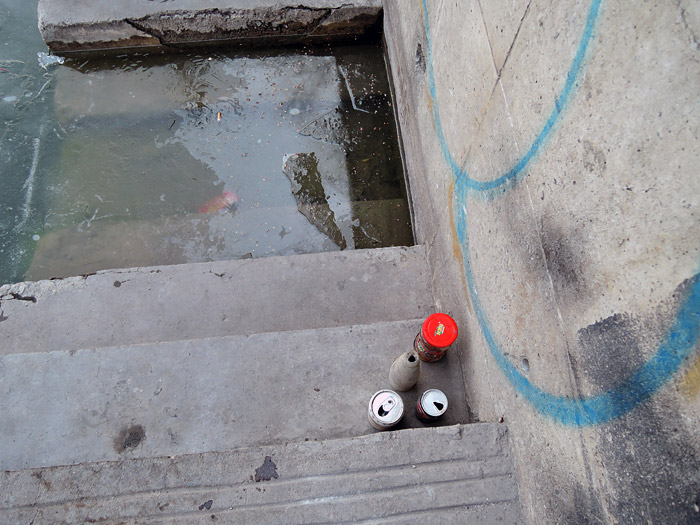 Brought them to the water.
Brought them to the water.
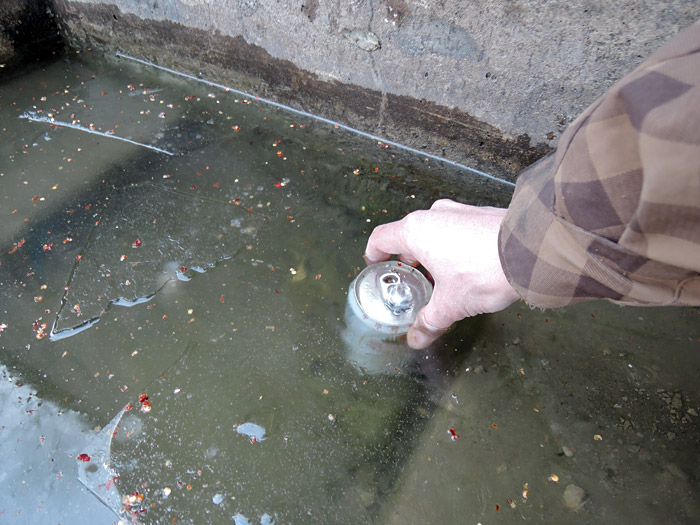 I broke the ice and filled the containers.
I broke the ice and filled the containers.
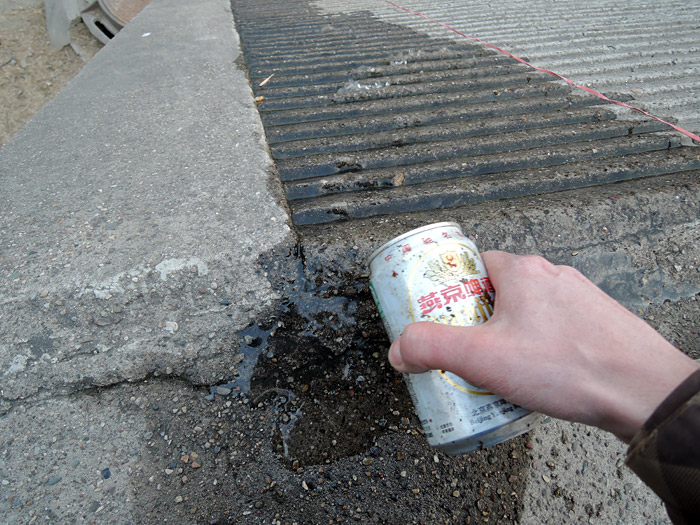 I threw the water trying to follow the red ribbon.
I threw the water trying to follow the red ribbon.
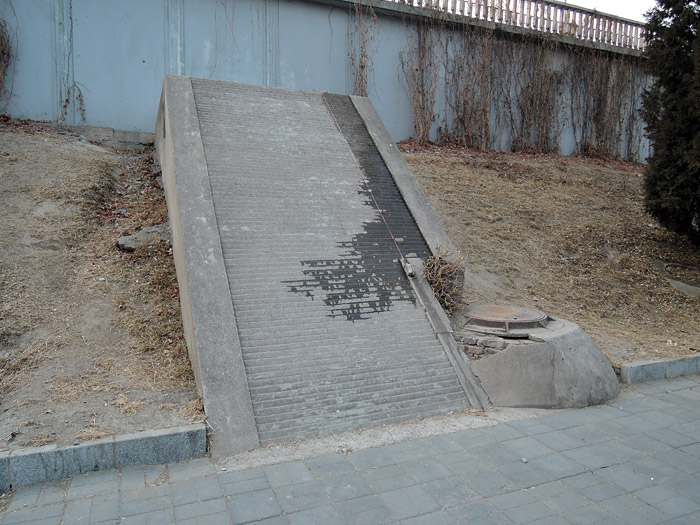 And I was not able to do it…
And I was not able to do it…
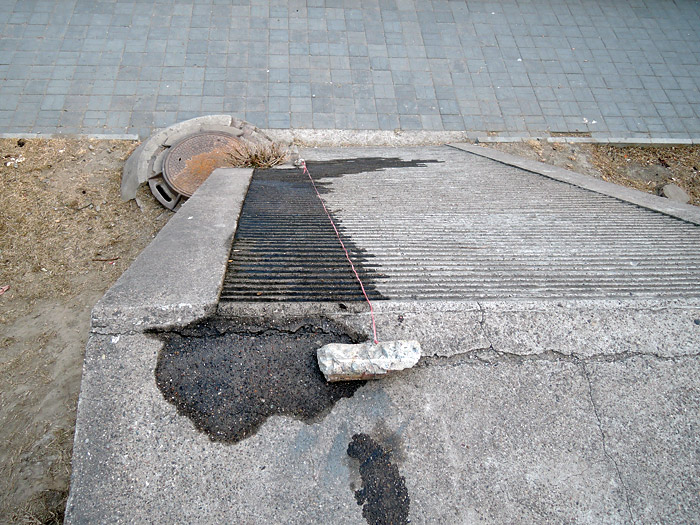
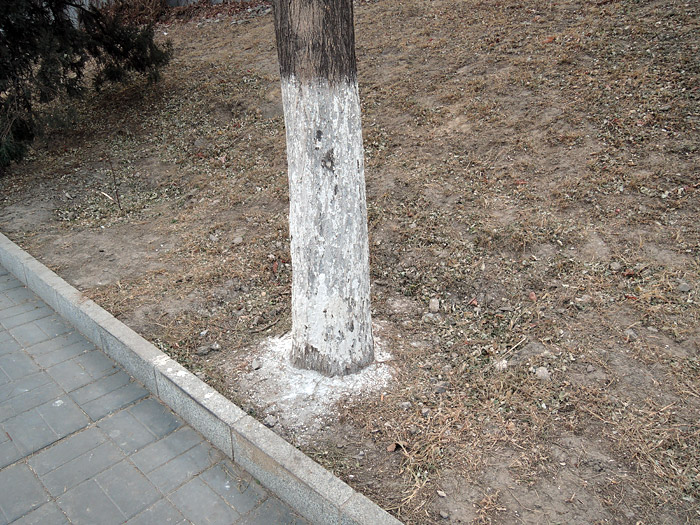 I was not satisfied yet and I looked for another way to mark the strip on the ramp.
I was not satisfied yet and I looked for another way to mark the strip on the ramp.
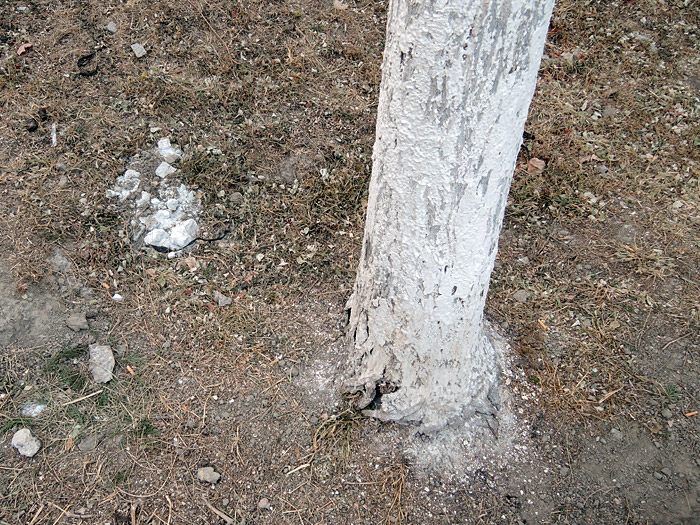 In Beijing, like in a lot of other cities, people paint the bottom part of the trees with what I assume is lime.
In Beijing, like in a lot of other cities, people paint the bottom part of the trees with what I assume is lime.
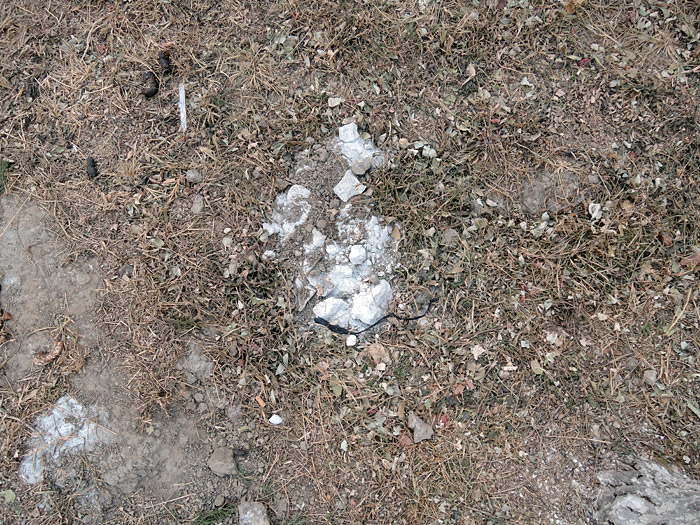 A few meters from the ramp I spotted remains of lime close to a tree.
A few meters from the ramp I spotted remains of lime close to a tree.
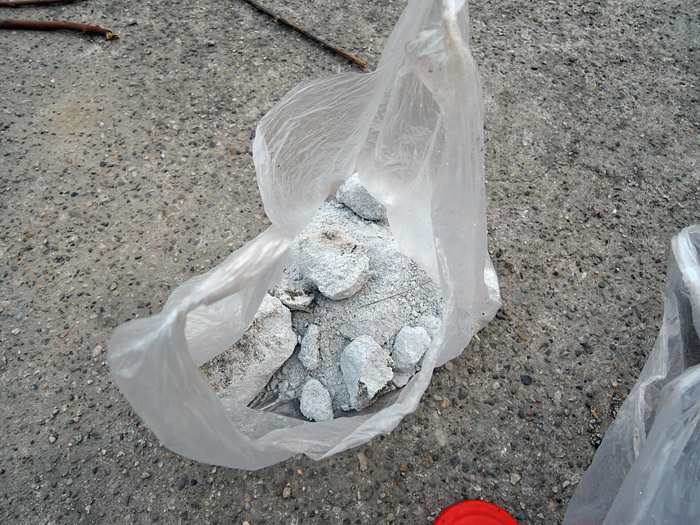 I collected it into a bag.
I collected it into a bag.
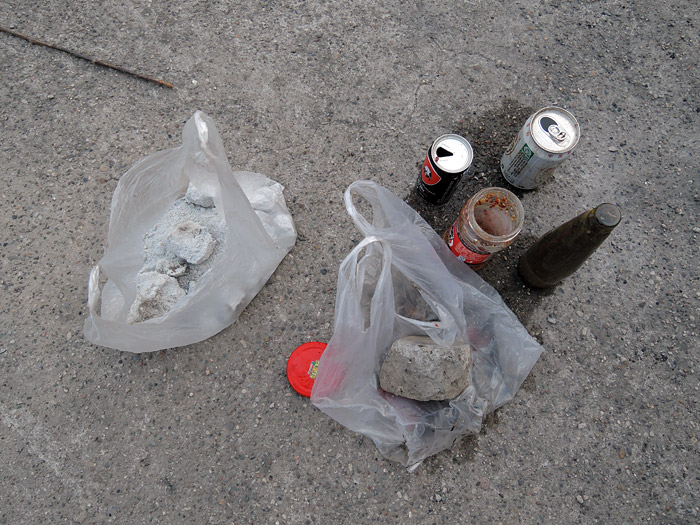
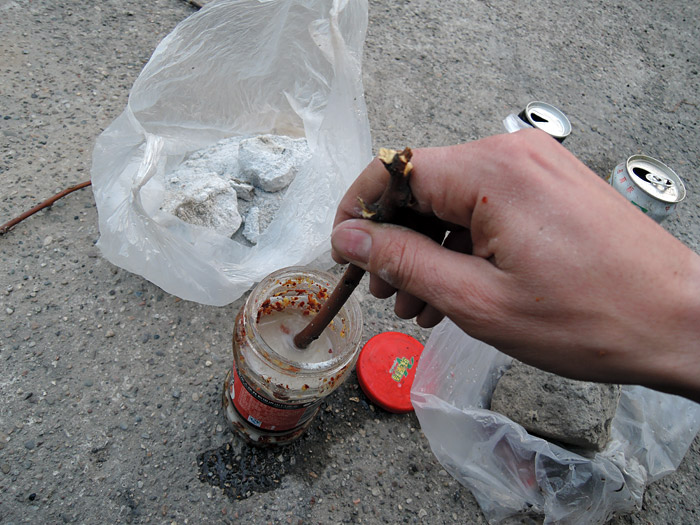 I mixed it with water.
I mixed it with water.
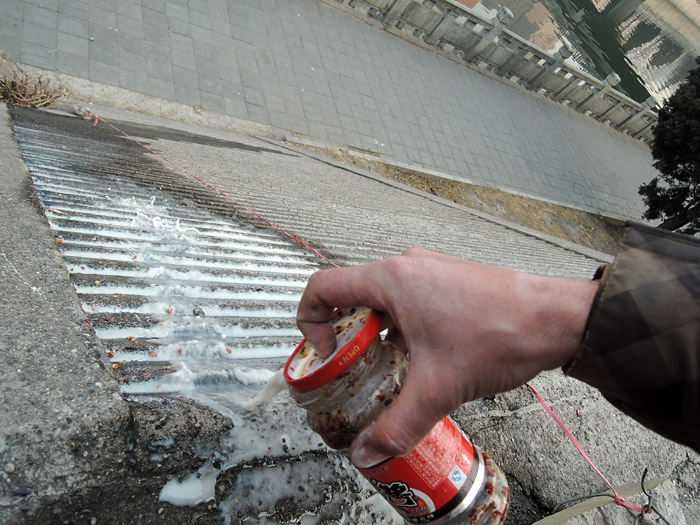
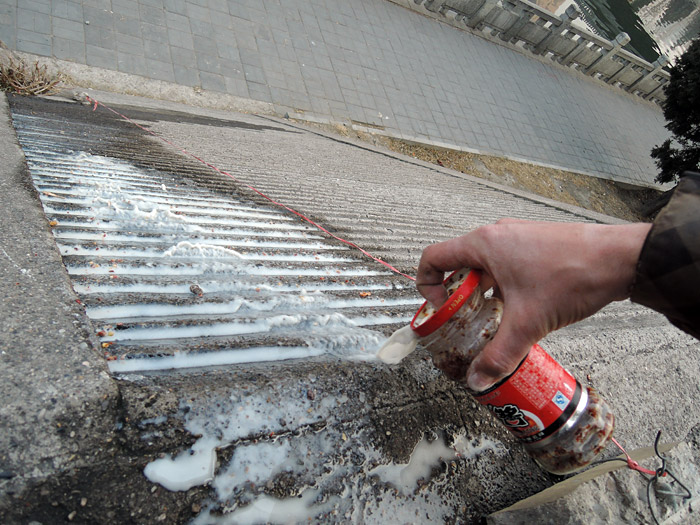 I threw the mixture down from the same place as before.
I threw the mixture down from the same place as before.
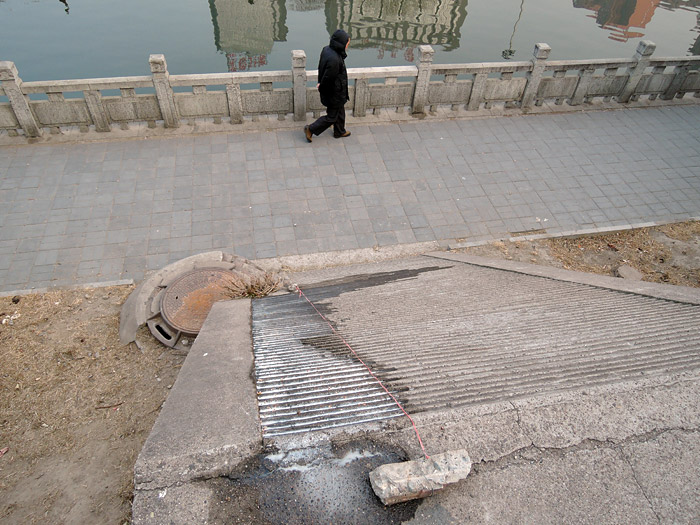
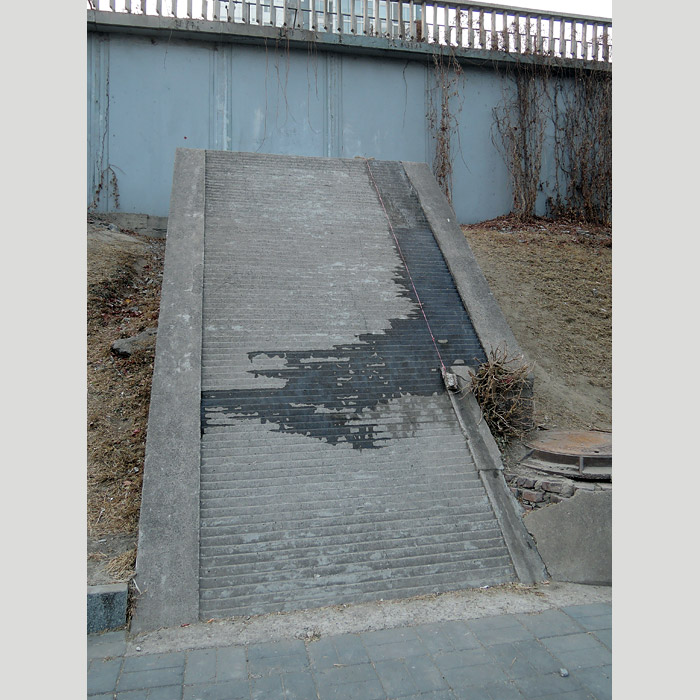 It was already late and to see the effect of the lime, I would have to wait for the water to dry completely. It was getting colder and colder and it was taking too long to dry so I decided to leave it like that hoping that once it would be dry a little bit of white would appear. I am sorry, I would also love to know if it worked or not but I had no other choice than to leave.
It was already late and to see the effect of the lime, I would have to wait for the water to dry completely. It was getting colder and colder and it was taking too long to dry so I decided to leave it like that hoping that once it would be dry a little bit of white would appear. I am sorry, I would also love to know if it worked or not but I had no other choice than to leave.
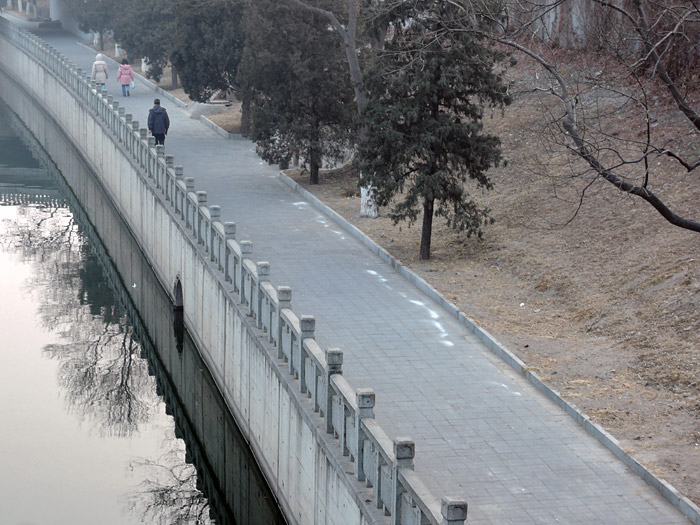 I turned and walked back to the north bringing the bag of lime with me. There was a hole in it.
I turned and walked back to the north bringing the bag of lime with me. There was a hole in it.
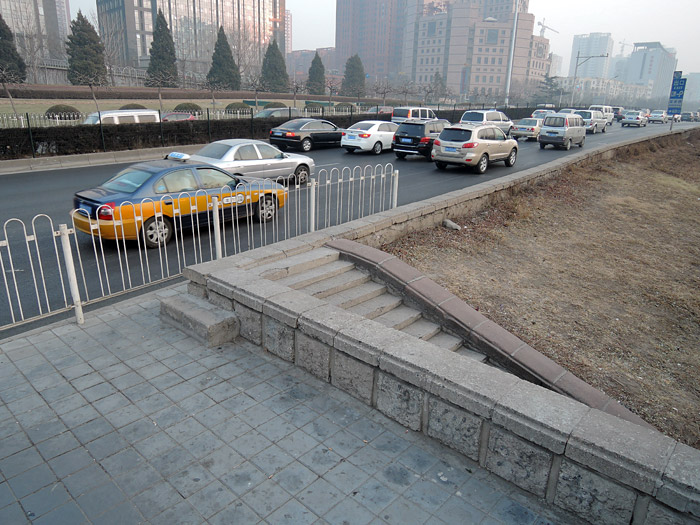 I used the first bridge I could find to cross the moat and walk on the opposite bank. On the way back, I always try to use a different path. Once on the other side, I found this stairway that led into a fence. I really liked this place for two reasons. First, the fence was blocking the exit from the stairs but at the same time it was protecting the pedestrians from the road. Second, if you look carefully in the photo you will see a rock placed on the side that provides access to the stairway.
I used the first bridge I could find to cross the moat and walk on the opposite bank. On the way back, I always try to use a different path. Once on the other side, I found this stairway that led into a fence. I really liked this place for two reasons. First, the fence was blocking the exit from the stairs but at the same time it was protecting the pedestrians from the road. Second, if you look carefully in the photo you will see a rock placed on the side that provides access to the stairway.
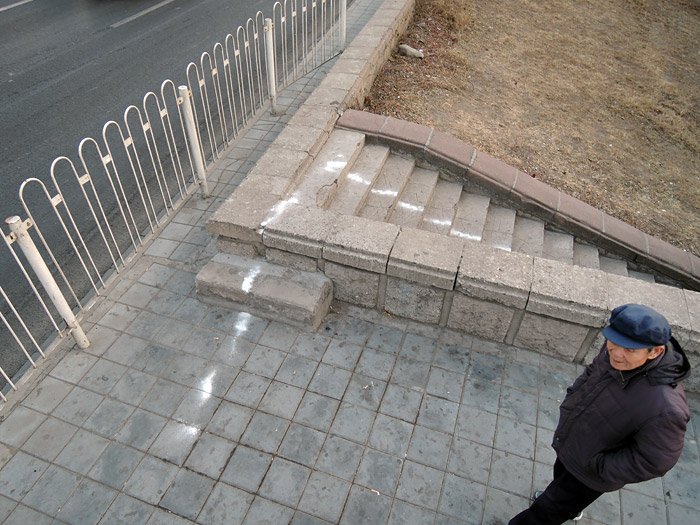 I decided to use my leaky bag full of lime to mark the stairs and its peculiar access.
I decided to use my leaky bag full of lime to mark the stairs and its peculiar access.
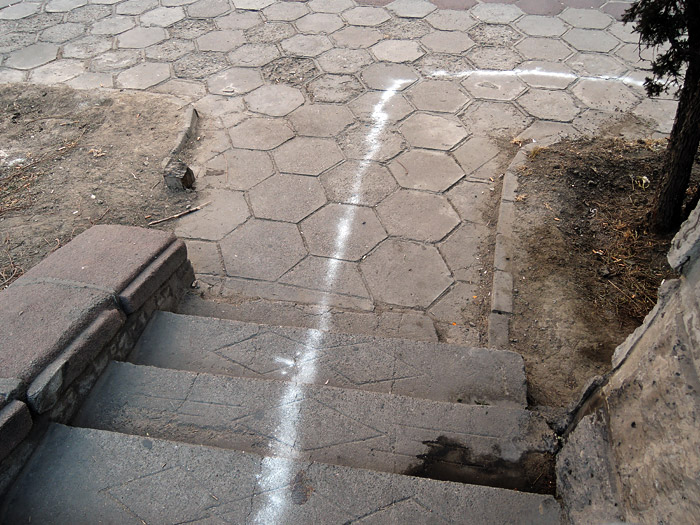
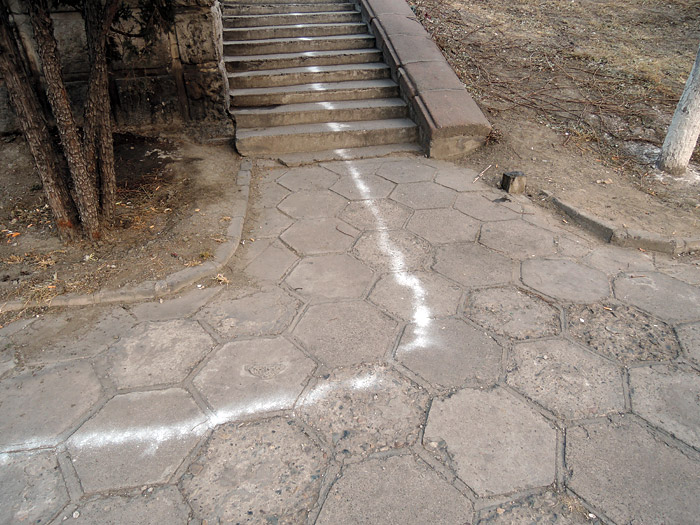
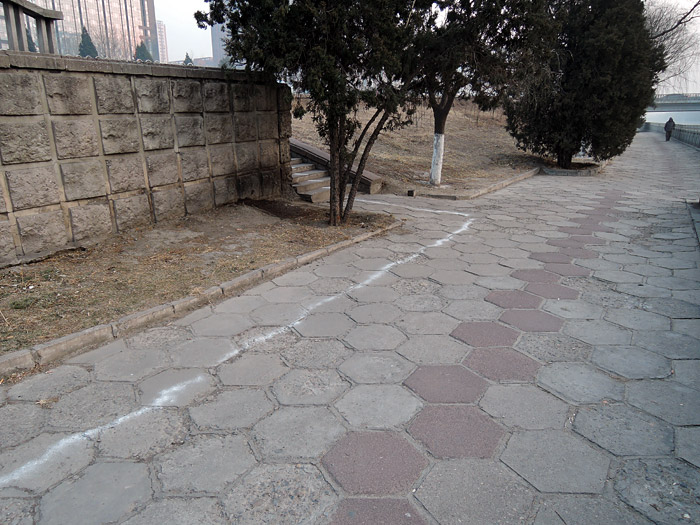
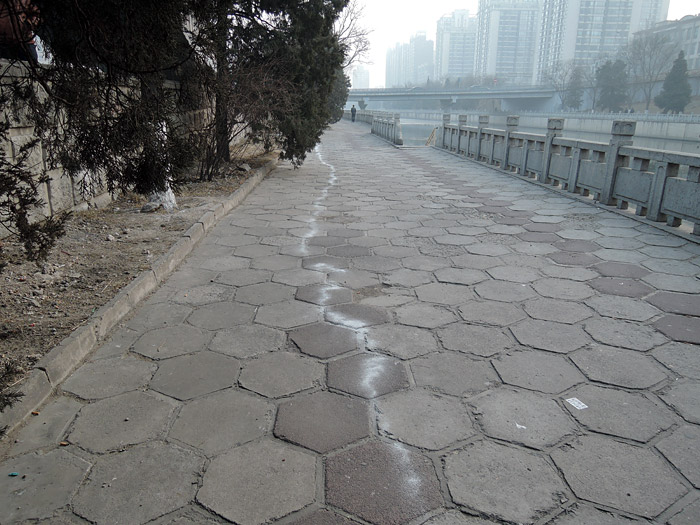
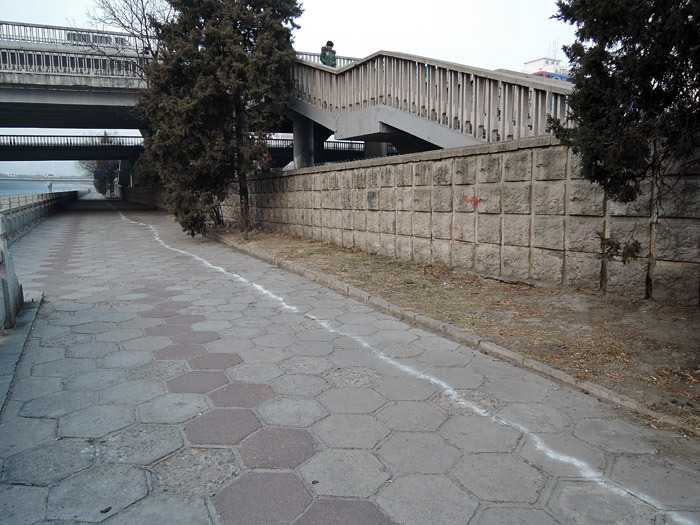
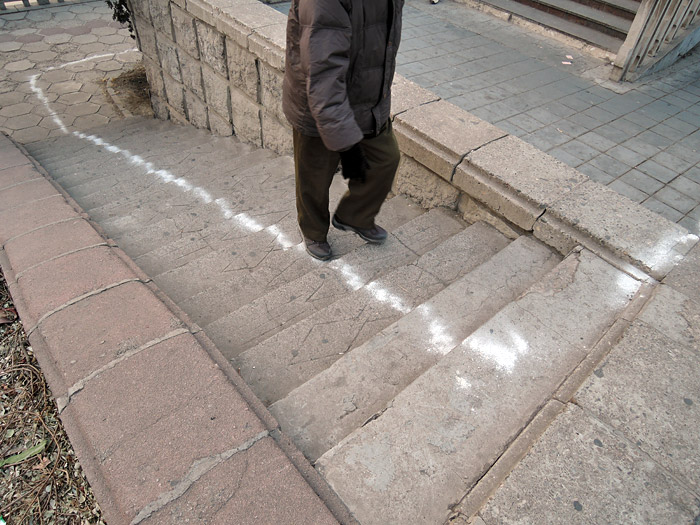
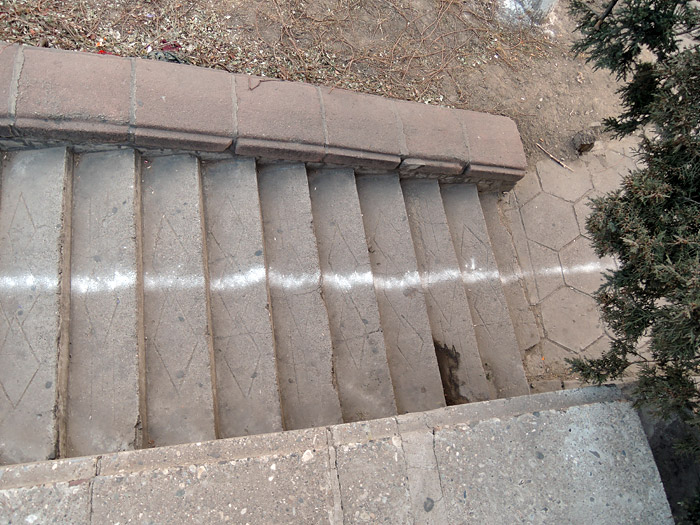
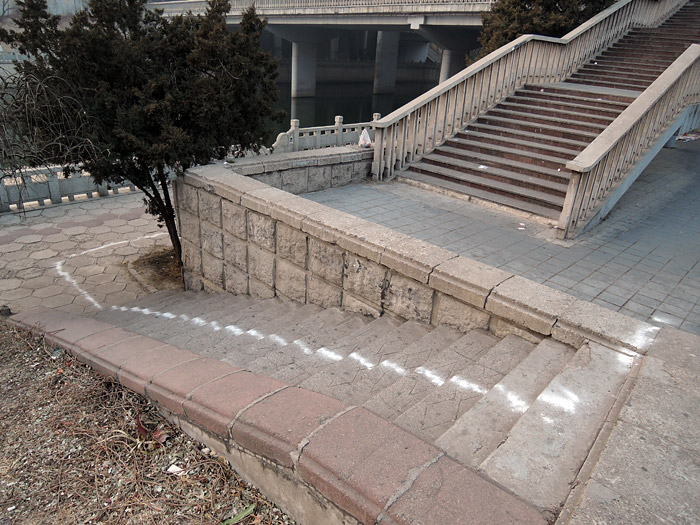
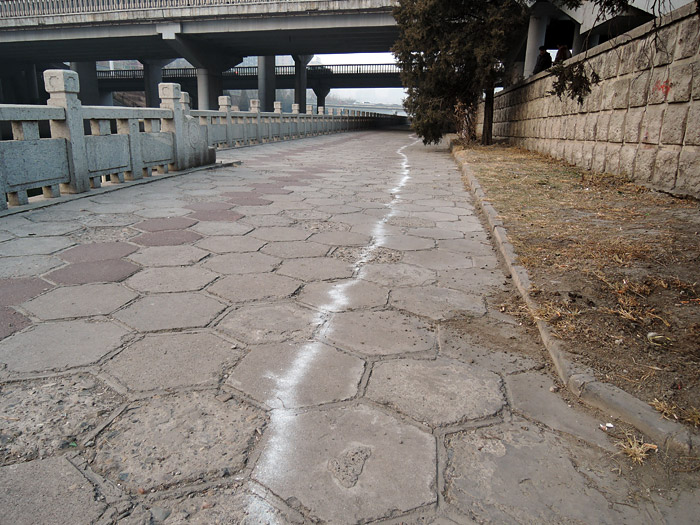
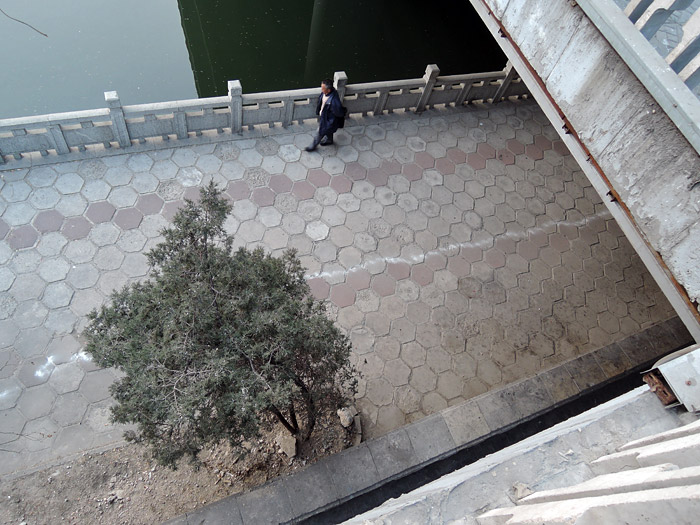
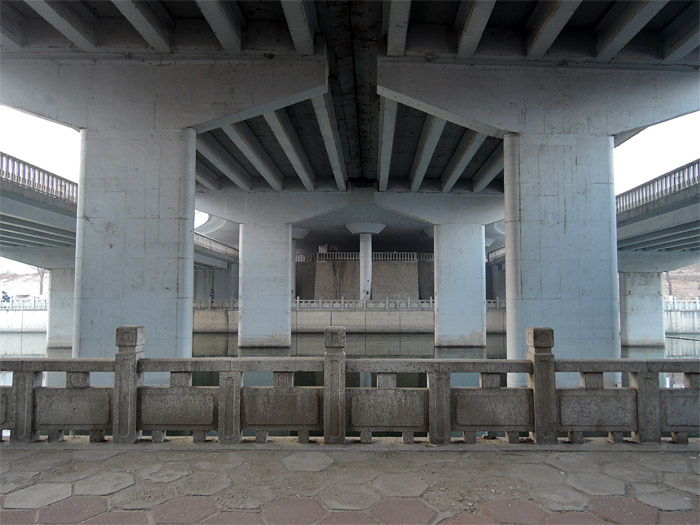 I emptied the bag and kept on walking north.
I emptied the bag and kept on walking north.
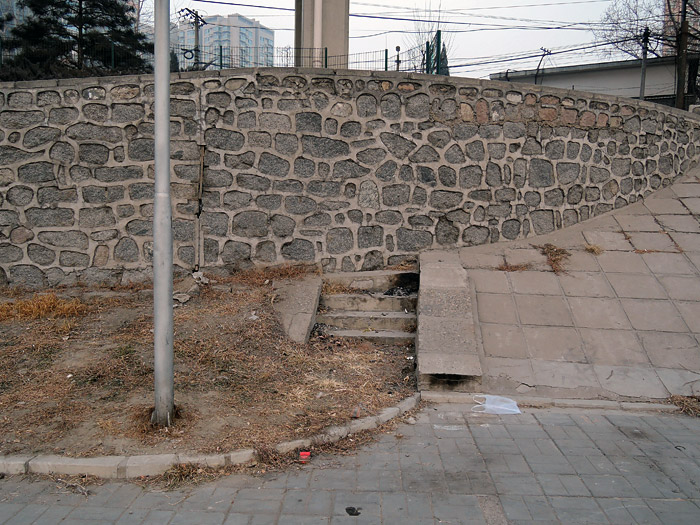 I enjoyed the rest of the walk thanks to this incredible series of absurd stairs: a small one that started in the grass and ended at the wall.
I enjoyed the rest of the walk thanks to this incredible series of absurd stairs: a small one that started in the grass and ended at the wall.
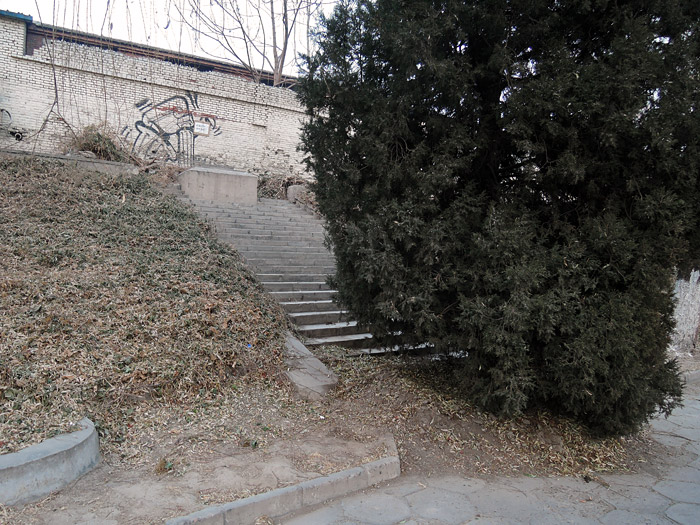 A huge one that started with a tree and a lot of dry leaves on the bottom and ended on top with a manhole and a wall.
A huge one that started with a tree and a lot of dry leaves on the bottom and ended on top with a manhole and a wall.
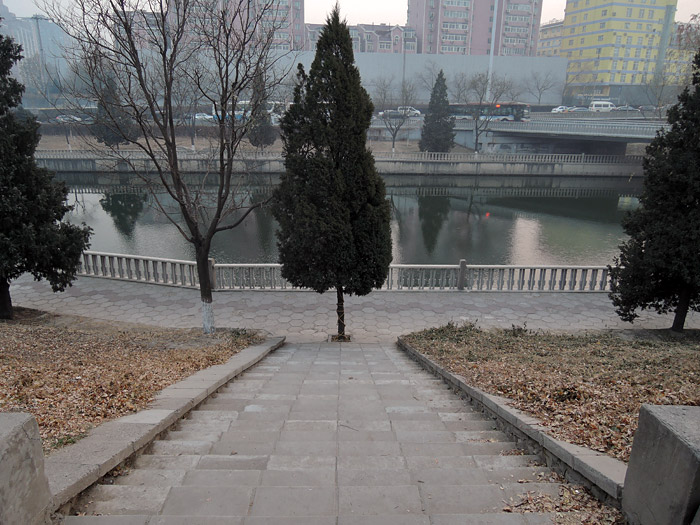 Another one with a tree right in the middle.
Another one with a tree right in the middle.
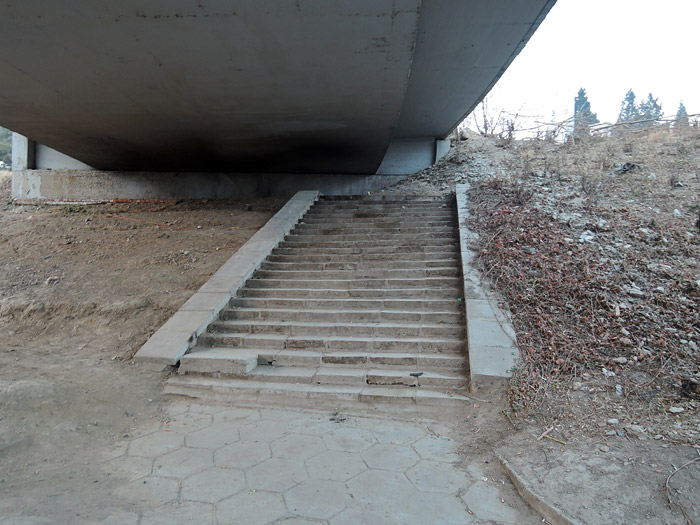 And this one that led under a bridge where there was not enough space to stand up when you reached the top.
And this one that led under a bridge where there was not enough space to stand up when you reached the top.
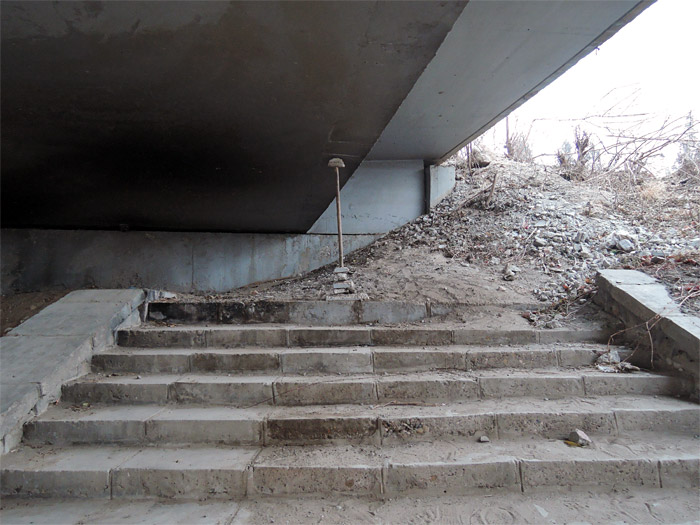 At the last stairway, I decided to hold the bridge so it would not go down anymore and to protect people from bumping into it while climbing the stairs.
At the last stairway, I decided to hold the bridge so it would not go down anymore and to protect people from bumping into it while climbing the stairs.
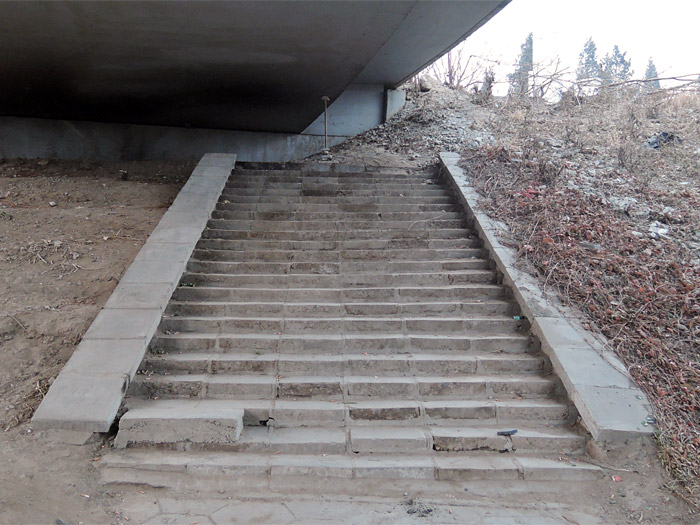
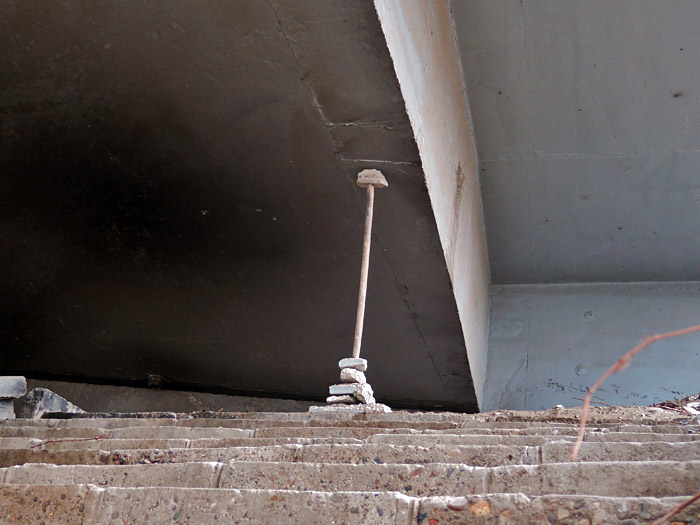
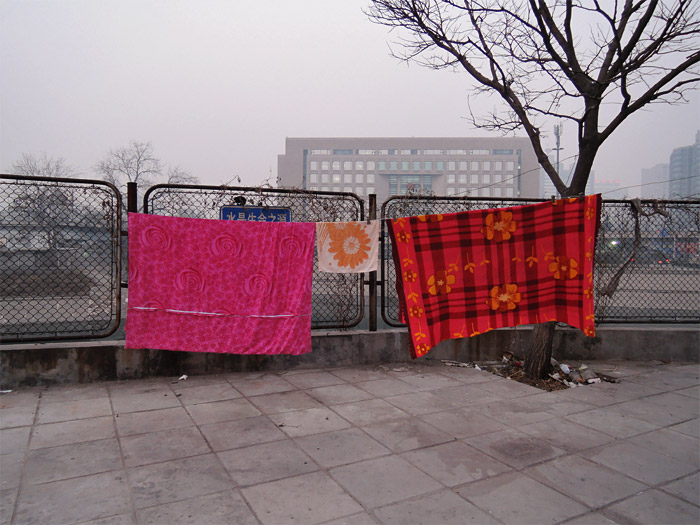
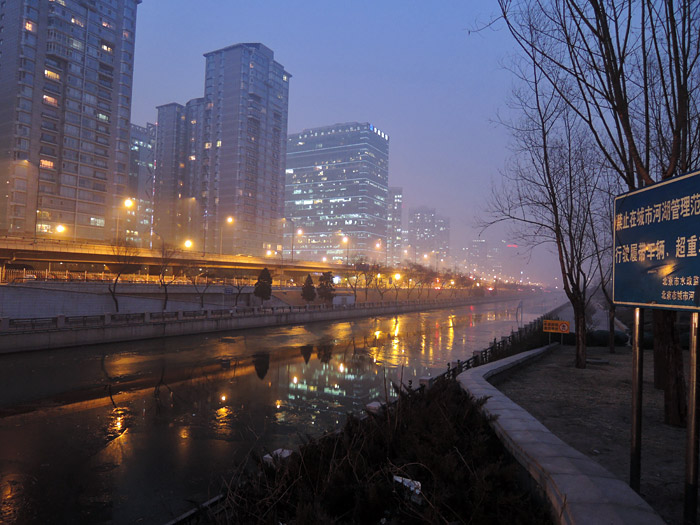 17h27, the pollution was at its maximum. For the first time in Beijing I used a mask.
17h27, the pollution was at its maximum. For the first time in Beijing I used a mask.
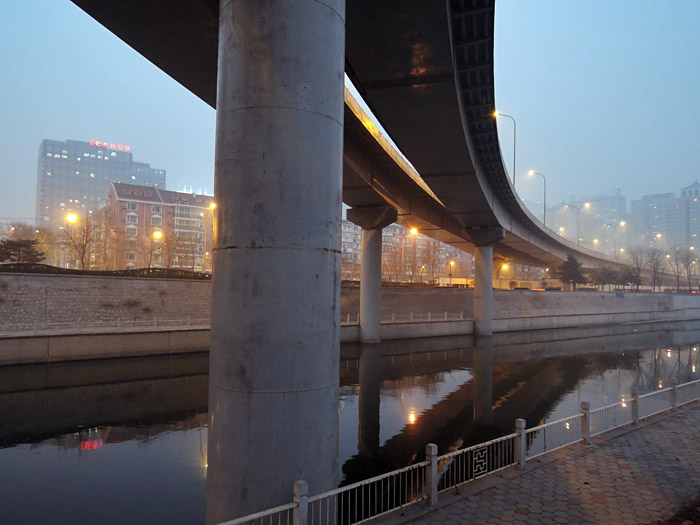
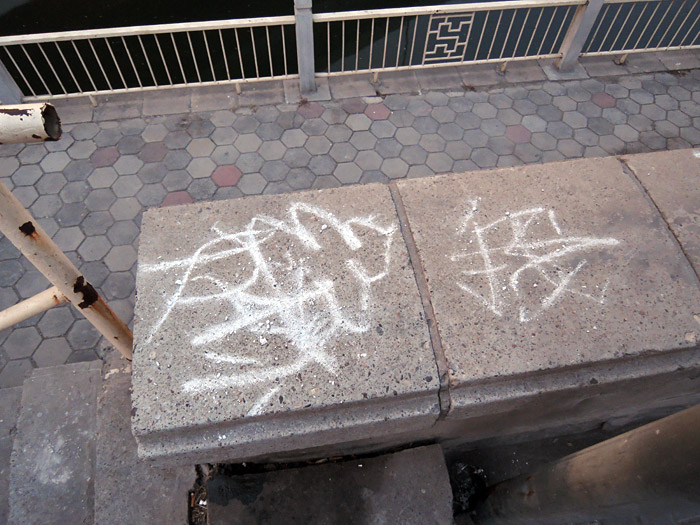 Someone else found a limestone.
Someone else found a limestone.
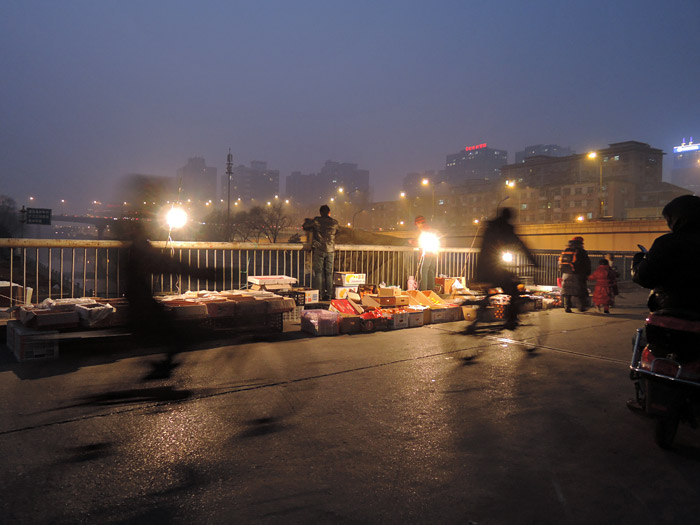
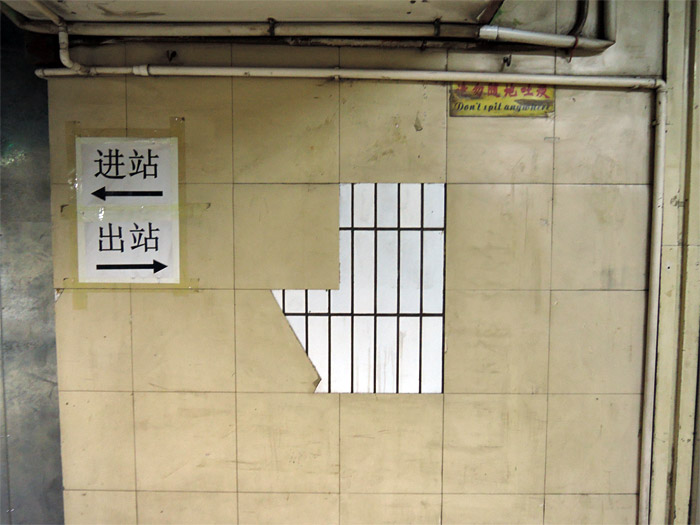 18h05, I entered the subway and went back home.
18h05, I entered the subway and went back home.
